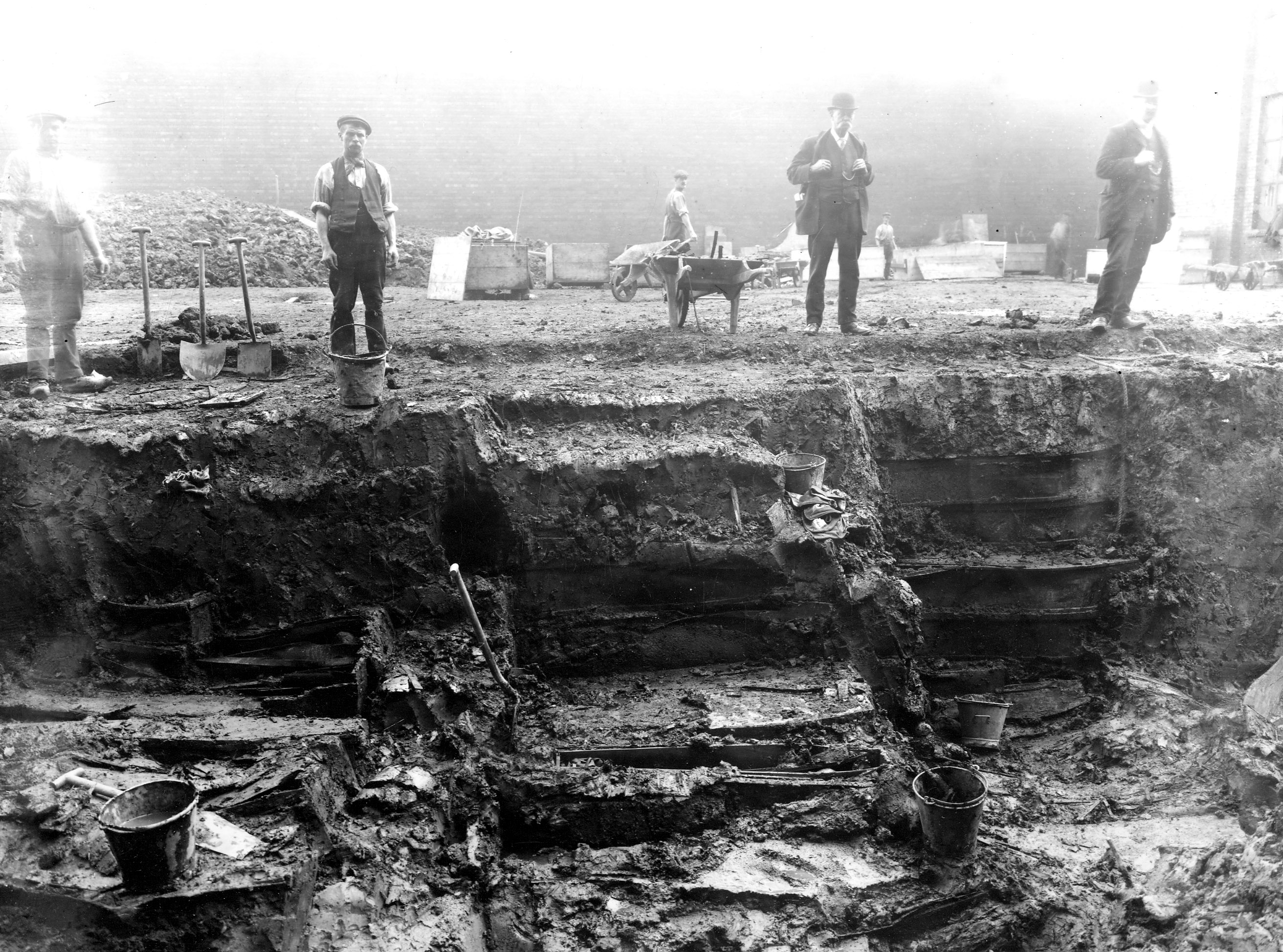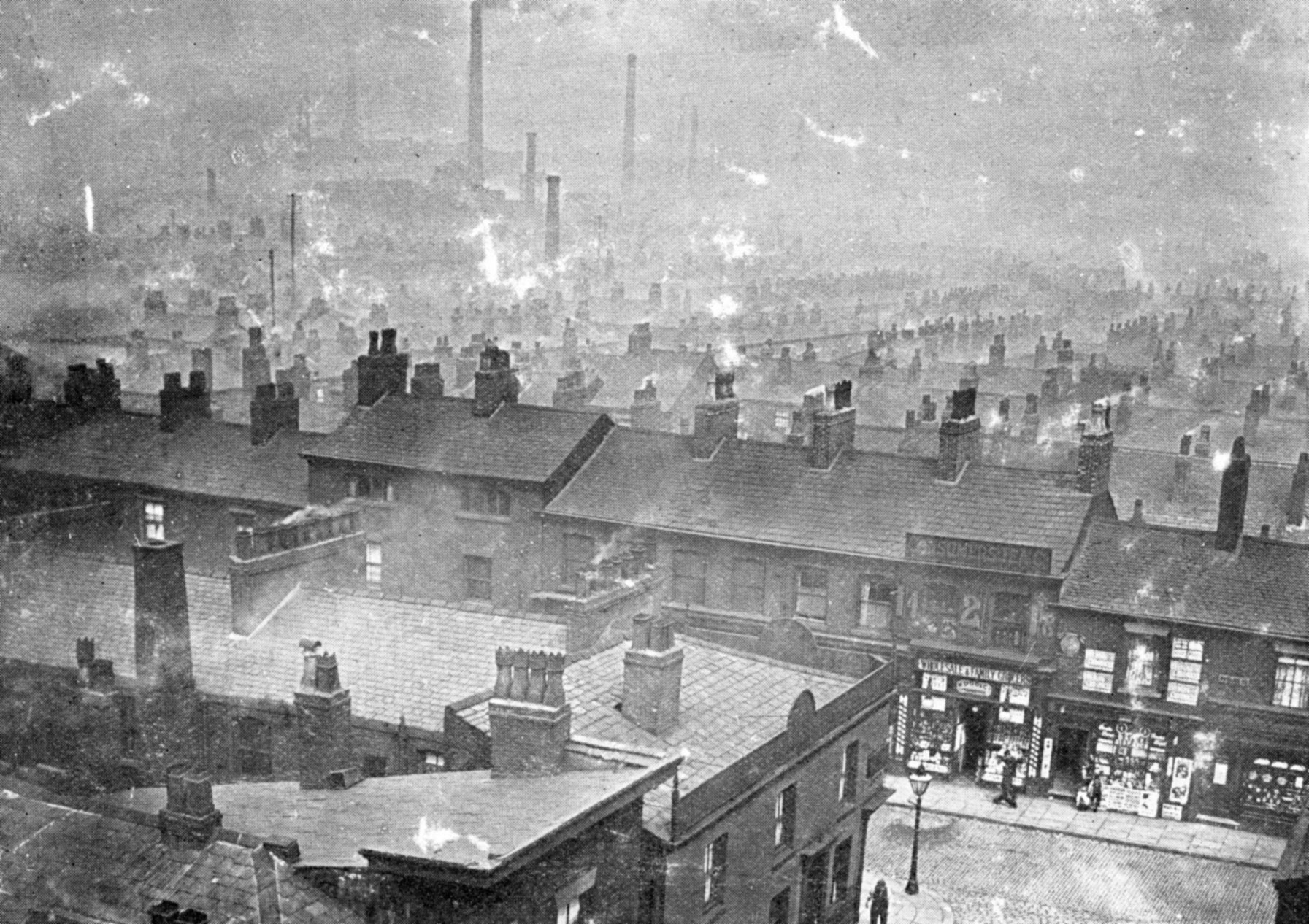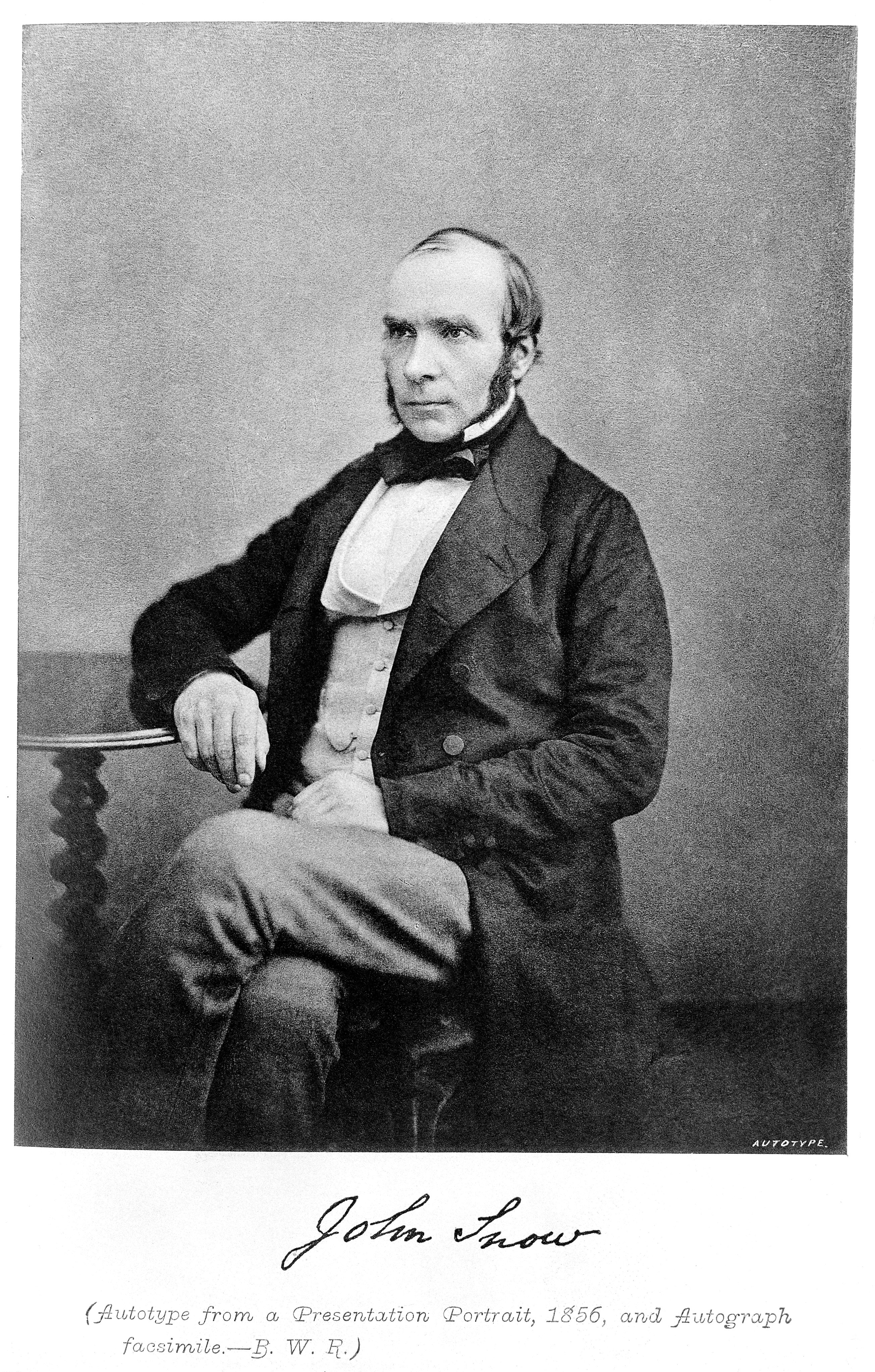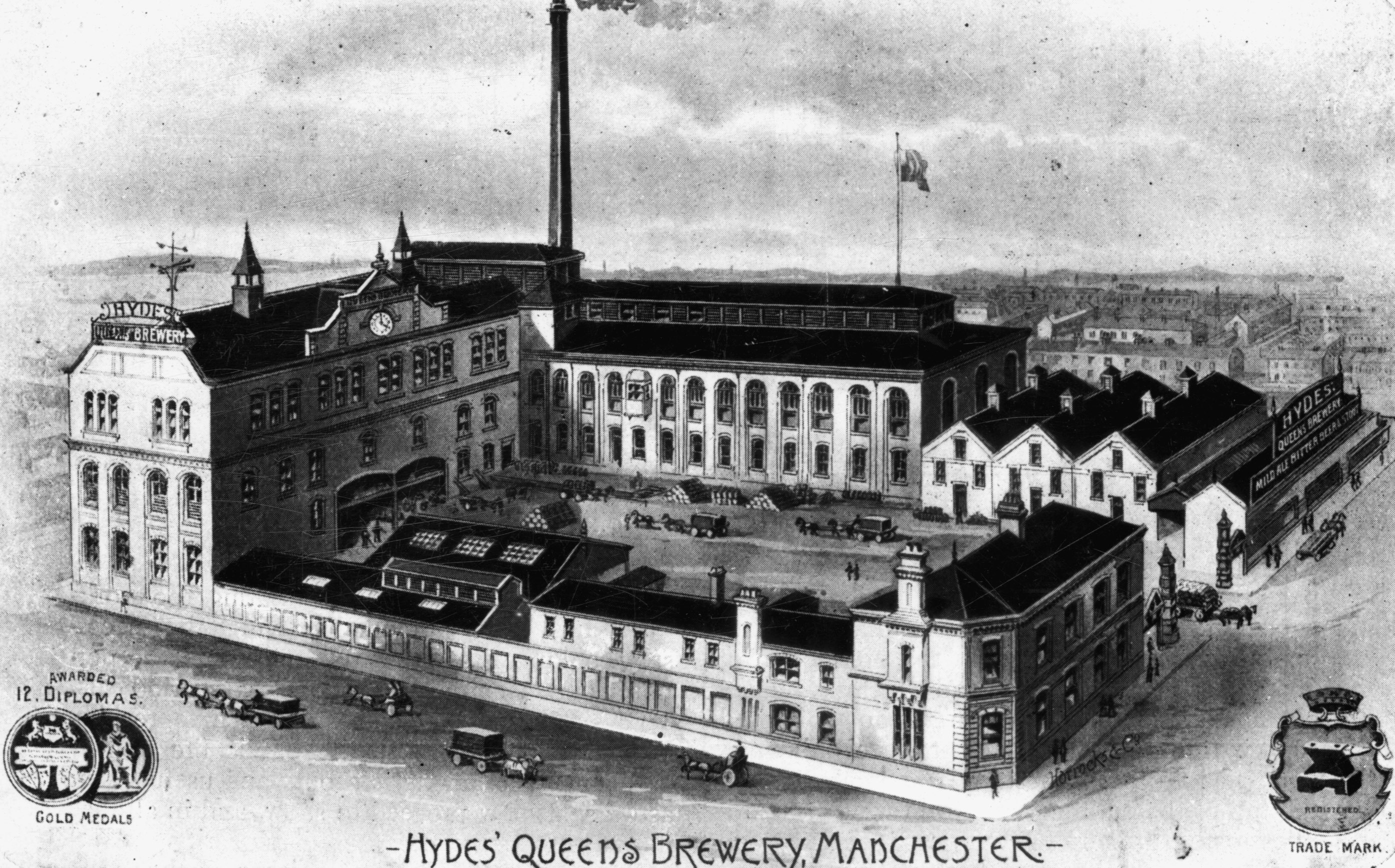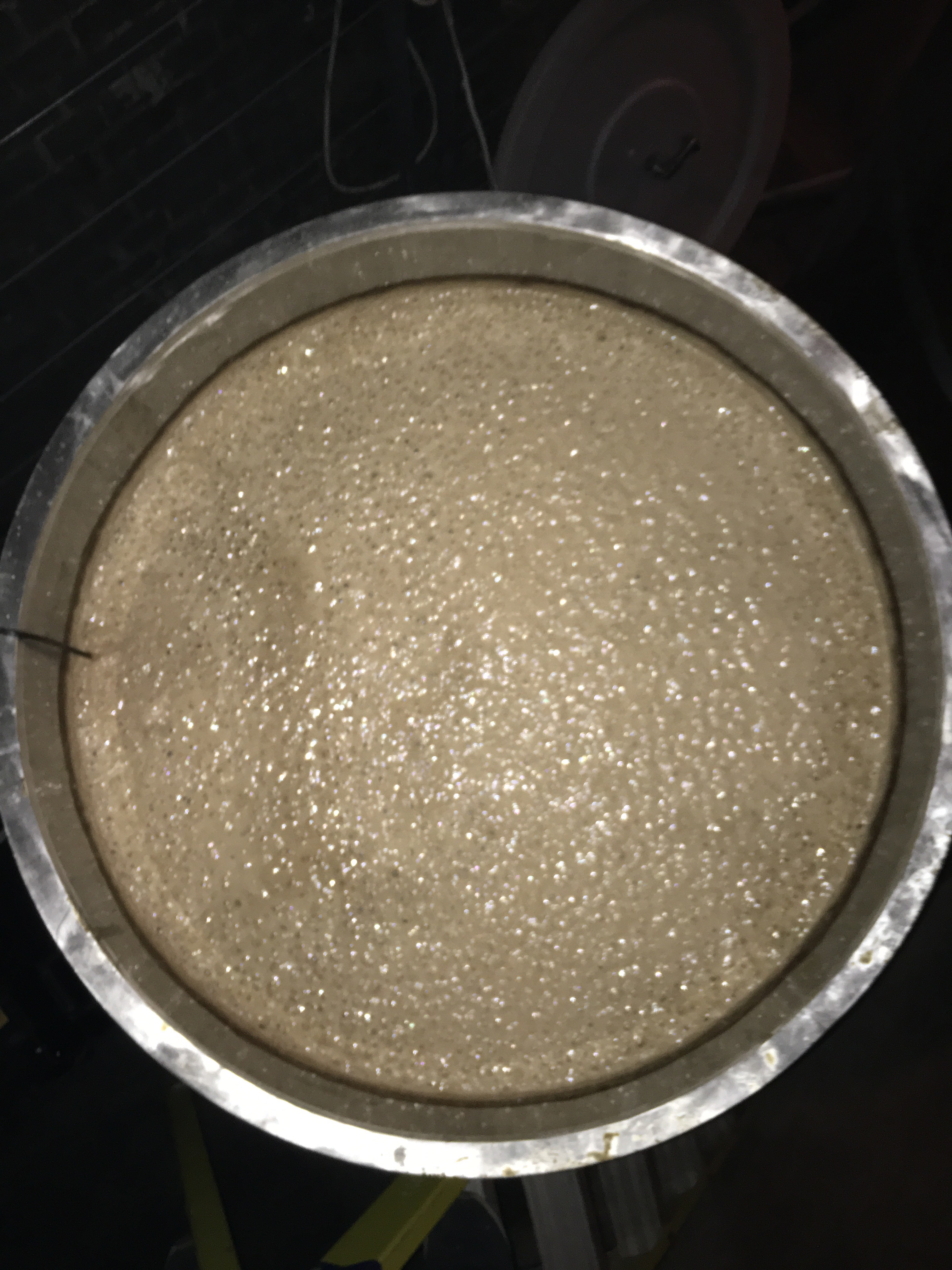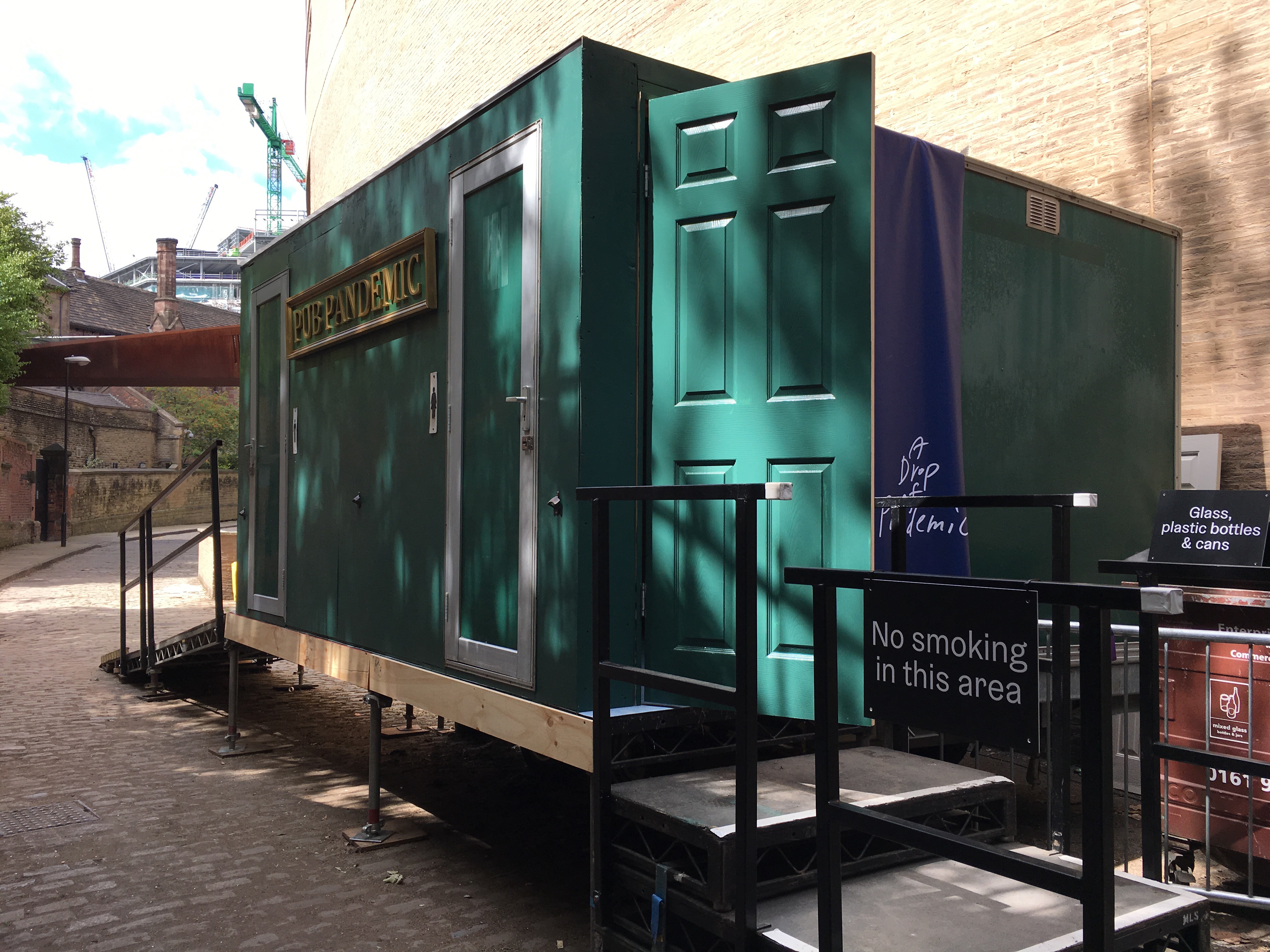- ---
Project Index -
BENTEN 2024BENTEN 2024 2024
ナラッキーNa-Lucky 2023
DOBUROKGEOLLIDOBUROKGEOLLI 2022
いつのことだか思いだしてごらんいつのことだか思いだしてごらん 2022
改名Name Change 2022
くらいんぐみゅーじあむCrying Museum 2022
SUNSUN 2022
はい、こんにちは Hello There 2020
May, 2020, TokyoMay, 2020, Tokyo 2020
A Drunk PandemicA Drunk Pandemic 2019
にんげんレストランNingen restaurant 2018
道Street 2017-
The other side 2017
Scrap & Build 2 2017
Scrap & Build 2016
Don't Follow The Wind initiated by Chim↑Pom 2015-
堪え難きを耐え↑忍び難きを忍ぶ10th ANNIVERSARY EXHIBITION 2015
金三昧KANE-ZANMAI 2014-
パラドックスPARADOX 2014
LOVE IS OVER 2014
マッドエリイMAD ELLIE 2013-
GARBAGE 2012-
PAVILION 2012-
REAL TIMES 2011
パズルPUZZLE 2011,2014-
IMAGINEIMAGINE 2010
BLACK OF DEATH 2008,2013
広島HIROSHIMA 2008-
日本のアートは10年おくれている 世界のアートは7,8年おくれているJAPANESE ART IS 10 YEARS BEHIND, AND ART OF THE WORLD IS 7 OR 8 YEARS BEHIND. 2008
友情か友喰いか友倒れかBecoming Friends, Eating Each Other or Falling Down Together 2008
TPA 2007
サンキューセレブプロジェクト・アイムボカンTHANK YOU CELEB PROJECT "I'M BOKAN" 2007
ともだちTOMODACHI 2007
オレオレORE-ORE 2007
エロキテルEROKITEL 2007-
スーパーラットSUPER RAT 2006-
BODY 2005-
- ---
Overview open/close -
"A Drunk Pandemic"
5–21 July 2019
Venue: Manchester Victoria Station Tunnels
WEB: The Origins Of Chim↑Pom’s Drunk Pandemic
CP opened a brewery in a tunnel under Manchester Victoria Station, where many cholera victims are buried, and brewed their original beer A Drop of Pandemic here in both EH-approved and EH-unapproved editions. During the cholera and plague outbreaks of the past, people drank beer instead of fresh water. Because water was boiled during the brewing process, beer was safer. Given this historical connection, CP built their own pub inside of public and temporary toilets outside of the tunnel, and sold their beer there. Because the symptoms of cholera include severe diarrhoea and dehydration, the relationship between cholera and toilets is a strong one. Poor sanitation caused by rapid urbanization at the time of the Industrial Revolution was one of the main causes of the cholera pandemic, which in turn then led to improvements in building infrastructure, sewage, and sanitation. Many cholera sufferers came from poorer communities: they were often older, unhealthier, working-class or drunk. Richer people regarded cholera sufferers as morally inferior and cholera itself as immoral - and in order to elimite this ‘immoral disease,’ the quality of life of these so-called ‘immoral people’ needed to be improved. It is said that the revolution in urban hygiene and sanitation started with this kind of thinking, and led to the construction of public toilets in order to discourage people from urinating on the streets. The word ‘pub’ is short for ‘public house,’ a place where communities come together to socialize, and people who come to pubs use their public toilets. CP extended a sewage pipe from the public toilets (and the pub) outside the tunnel - and at the end of the pipe, they installed a brick factory called ‘Piss Building.’ The sewage infrastructure links the brewery, the pub, the toilets and the brick factory, where we are making bricks from cement mixed with urine and then loading them on to crates as if to deliver them to building sites. This cycle of brewing, beer drinking and urinating thus spreads into the outside world in the forms of beer and bricks. Visitors attended brewery tours, which were designed to inspire discussions between audiences, exhibitors, and tour guides. Several special events including talks and pub quizzes took place inside the tunnel during the Festival. —Manchester International Festival "A Drunk Pandemic"
This project page reproduces the brewery tour that took place at Manhester International Festival 2019. Please scroll through the images of each section and read the descriptions to enjoy the tour.
5–21 July 2019
Venue: Manchester Victoria Station Tunnels
WEB: The Origins Of Chim↑Pom’s Drunk Pandemic
CP opened a brewery in a tunnel under Manchester Victoria Station, where many cholera victims are buried, and brewed their original beer A Drop of Pandemic here in both EH-approved and EH-unapproved editions. During the cholera and plague outbreaks of the past, people drank beer instead of fresh water. Because water was boiled during the brewing process, beer was safer. Given this historical connection, CP built their own pub inside of public and temporary toilets outside of the tunnel, and sold their beer there. Because the symptoms of cholera include severe diarrhoea and dehydration, the relationship between cholera and toilets is a strong one. Poor sanitation caused by rapid urbanization at the time of the Industrial Revolution was one of the main causes of the cholera pandemic, which in turn then led to improvements in building infrastructure, sewage, and sanitation. Many cholera sufferers came from poorer communities: they were often older, unhealthier, working-class or drunk. Richer people regarded cholera sufferers as morally inferior and cholera itself as immoral - and in order to elimite this ‘immoral disease,’ the quality of life of these so-called ‘immoral people’ needed to be improved. It is said that the revolution in urban hygiene and sanitation started with this kind of thinking, and led to the construction of public toilets in order to discourage people from urinating on the streets. The word ‘pub’ is short for ‘public house,’ a place where communities come together to socialize, and people who come to pubs use their public toilets. CP extended a sewage pipe from the public toilets (and the pub) outside the tunnel - and at the end of the pipe, they installed a brick factory called ‘Piss Building.’ The sewage infrastructure links the brewery, the pub, the toilets and the brick factory, where we are making bricks from cement mixed with urine and then loading them on to crates as if to deliver them to building sites. This cycle of brewing, beer drinking and urinating thus spreads into the outside world in the forms of beer and bricks. Visitors attended brewery tours, which were designed to inspire discussions between audiences, exhibitors, and tour guides. Several special events including talks and pub quizzes took place inside the tunnel during the Festival. —Manchester International Festival
- ---
Media open/close -
『ARTNE』(6月25日付西日本新聞朝刊に掲載)
遮られる世界 パンデミックとアート 椹木野衣<17>【連載】予言的なChim↑Pom㊦ 21世紀に突如暴露された 隠された都市の野蛮な顔 26/6/2020
『ARTNE』(6月18日付西日本新聞朝刊に掲載) 遮られる世界 パンデミックとアート 椹木野衣<16>【連載】予言的なChim↑Pom㊤ 「都市の害獣」表現する集団 19世紀 英コレラ禍を作品化 19/6/2020
"ArtReview"ArtReview September issue
- ---
Index open/close -
Lecture RoomLecture room
Chim↑Pom sectionChim↑Pom section
A Drop of Pandemic BreweryA Drop of Pandemic Brewery
Piss BuildingPiss Building
Pub PandemicPub Pandemic
- ---
Lecture RoomLecture Room open/close -
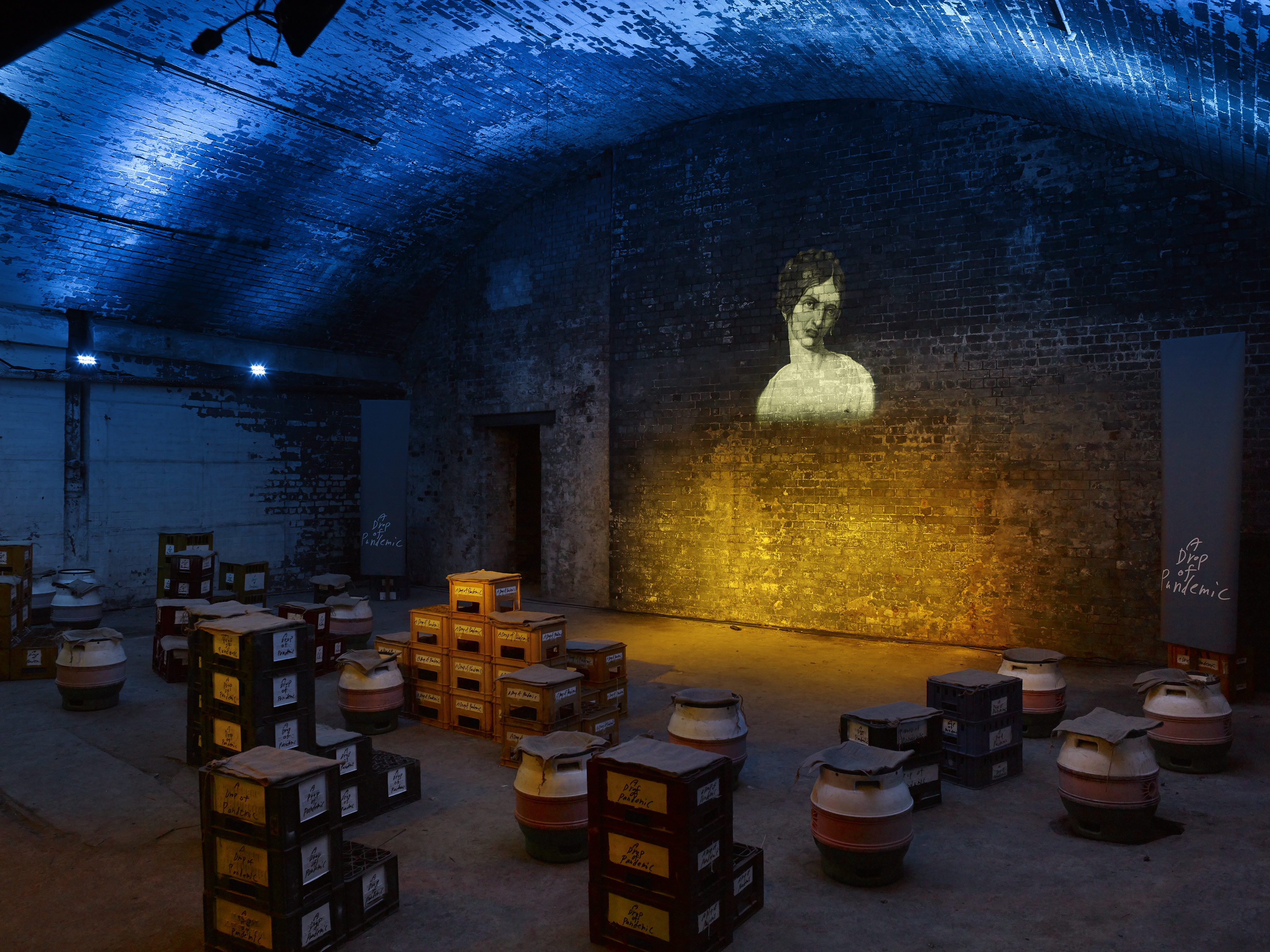
Photo: Michael Pollard
Welcome. This is Walkers Croft, and Japanese artist collective Chim↑Pom are brewing beer here. This location is very important for this original beer ‘A Drop of Pandemic’.
This tunnel is located underneath Victoria Station, where about 40,000 people were buried during the 19th century. Many victims of cholera were buried here.
Population in Manchester increased after the Industrial Revolution, but the city was not well sanitized and many people died. Walker's Croft was determined to be a burial ground in 1815, as it was located in the suburbs, near the church, and near the workhouse.Walker's Croft's graveyard is essentially a mass grave. In each hole there was a layer of dead bodies. It must be noted that not all bodies buried here died from Cholera. The usual mass grave was 50 to 60 burials in one hole, but in the case of the cholera outbreak In 1833, it was decided to use soil made available from the excavations of new sewers to cover the existing graves, thus creating a new layer of available burial space and allowing 100 burials.
Friedrich Engels called the cemetery ‘the pauper burial ground’.
In this sense, this place, Walkers Croft, is a graveyard for the poor people who were the victims of the social system based on factories, capitalism, labour and cities.
By the mid 1840s, some factories were built around Walker's Croft, which required the development of trains as a means of transportation. Victoria station had its opening ceremony only 12 years after the cholera epidemic.
According to a 2013 article, many dead bodies were found during the development of the city’s tram network.
With the Industrial Revolution and the development of capitalism, cities were rapidly growing and the notion of hygiene was virtually non-existent. The victims of this bad hygiene were poor people.
In this sense, the cholera pandemic could be a synonym for “the pandemic” of labourers and factories. It became a global pandemic as trading spread around the world.
In Japan, cholera was brought from overseas in 1822, and a major outbreak occurred in the mid 1800s as the country’s capitalism developed. In Japan it was treated as a mysterious disease from a foreign country. This deadly disease was characterized with the face of a tiger and the body was drawn as a monster with testicles of a raccoon.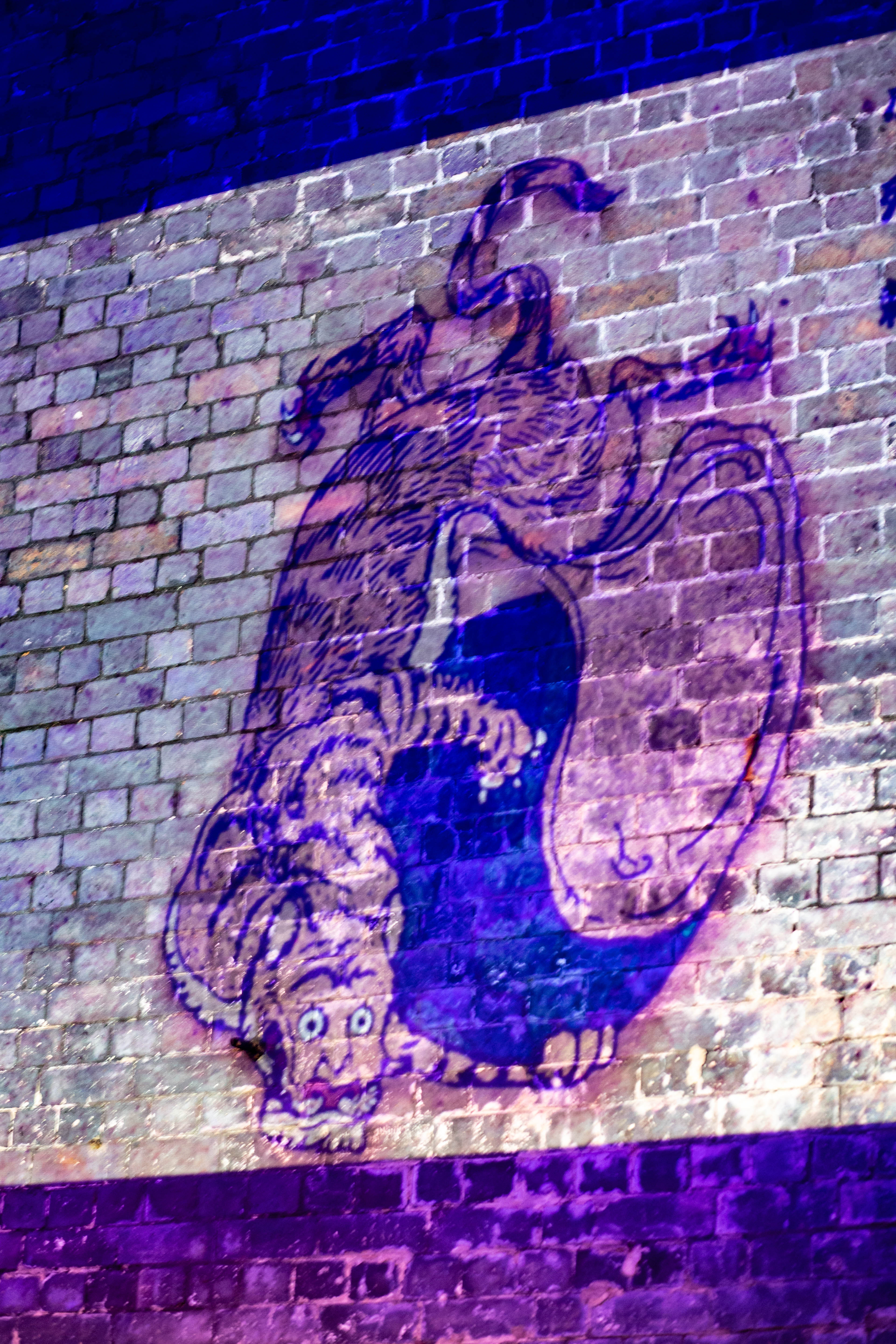
Photo: Rob Connor
There were no sanitation measures in the city and air pollution was serious. Manchester had the worst living environment in the UK, and it was nicknamed "odor town." They also did not have a suitable system for disposing of human waste with several houses sharing a single toilet.
It was not until the reports of concerned social investigators, such as Dr James Kay-Shuttleworth and Edwin Chadwick were made public, that the governing authorities took notice of the need for sanitary improvements. Both men had made a connection between high death rates, poverty and a lack of adequate sanitation.The average life expectancy of a labourer was 22.Many doctors and scholars said the city needed a sanitation system, but the Manchester government ignored it for a long time.
By the start of October 1832, death rates had begun to fall. John Snow, a doctor from London who was working in Soho, had begun to make the connection between contaminated water supplies through sewage and cesspools near drinking wells and cholera. In London, he began to map everyone that contracted cholera within a specific radius and all the cases centred around a water pump. In September 1854, he produced his results to local officials and the pump was removed and the cholera outbreak in that area subsided.He also noted that those that worked in a brewery and drank beer instead of water did not get cholera – he assumed that they had drank that much beer, they did not need another drink. Beer was regarded as more hygienic than water, because the water used to make it was boiled in a brewing process.
Small beer was often drank at breakfast, it was much more palatable than the water, and at only 1-2% alcohol volume was a very socially acceptable drink to choose and which often would be prescribed to people when ill.
A twenty-three year old Viennese women, depicted after contracting cholera in the first European epidemic in 1831. According to the original caption, this image shows her only an hour after contracting the disease, she died four hours later.
Because bodies turned blue, cholera was called ‘blue fear’ and frightened by people. I mentioned ‘pandemic’, but the rapid growth of cholera bacteria could be likened to the disease pandemic.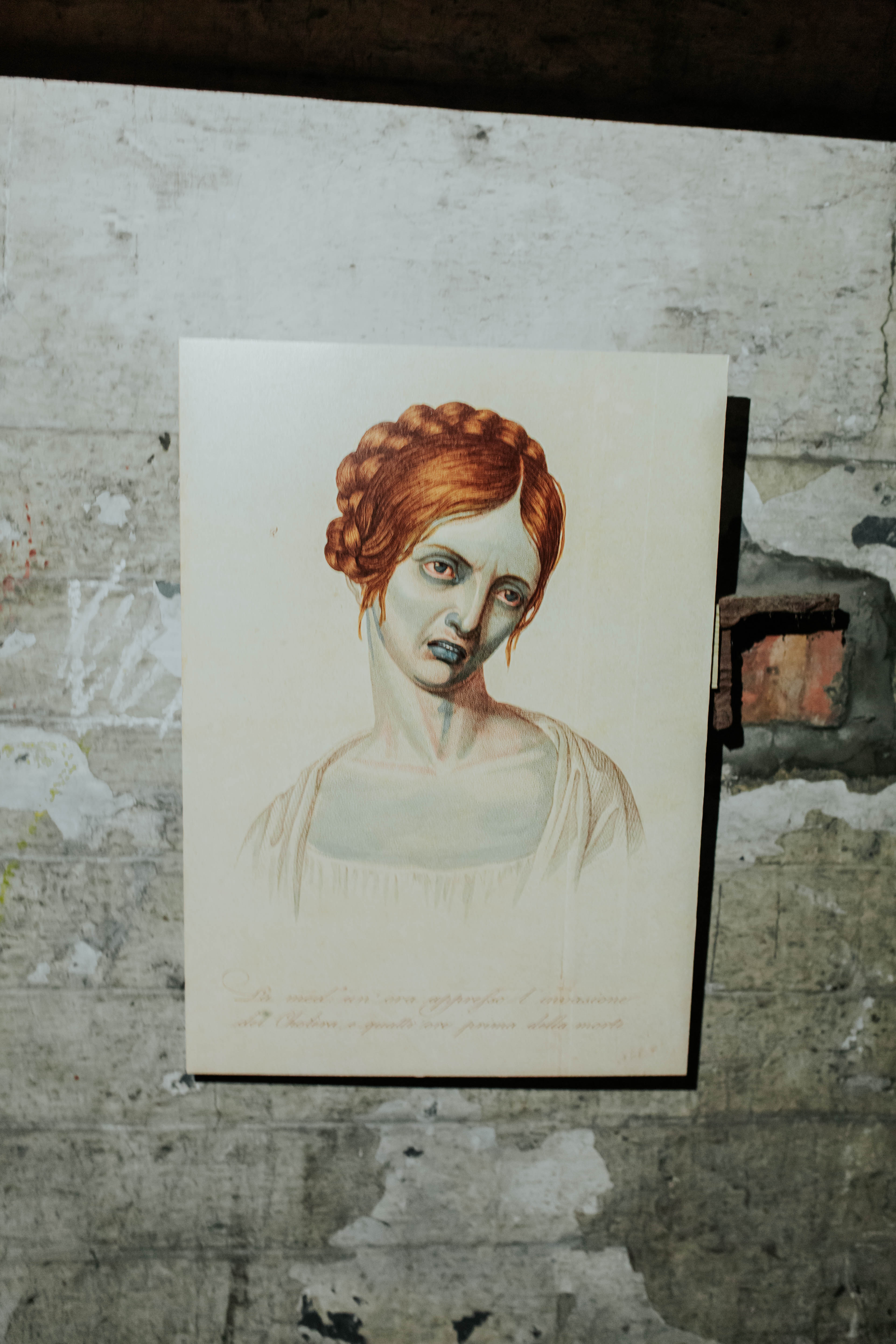
Photo: Rob Connor
The incubation period is early for several hours, and after infection the bacteria grow again and again. Symptoms caused by it are mainly vomiting, diarrhoea, hypothermia, expression is distorted, skin is dry due to extreme dehydration, the hand becomes "washer's wrinkles", face is called "cholera face" It looks like a peculiar old man. It is said that many people died in a few hours to a few days after contracting it.
- ---
Chim↑Pom sectionChim↑Pom section open/close -
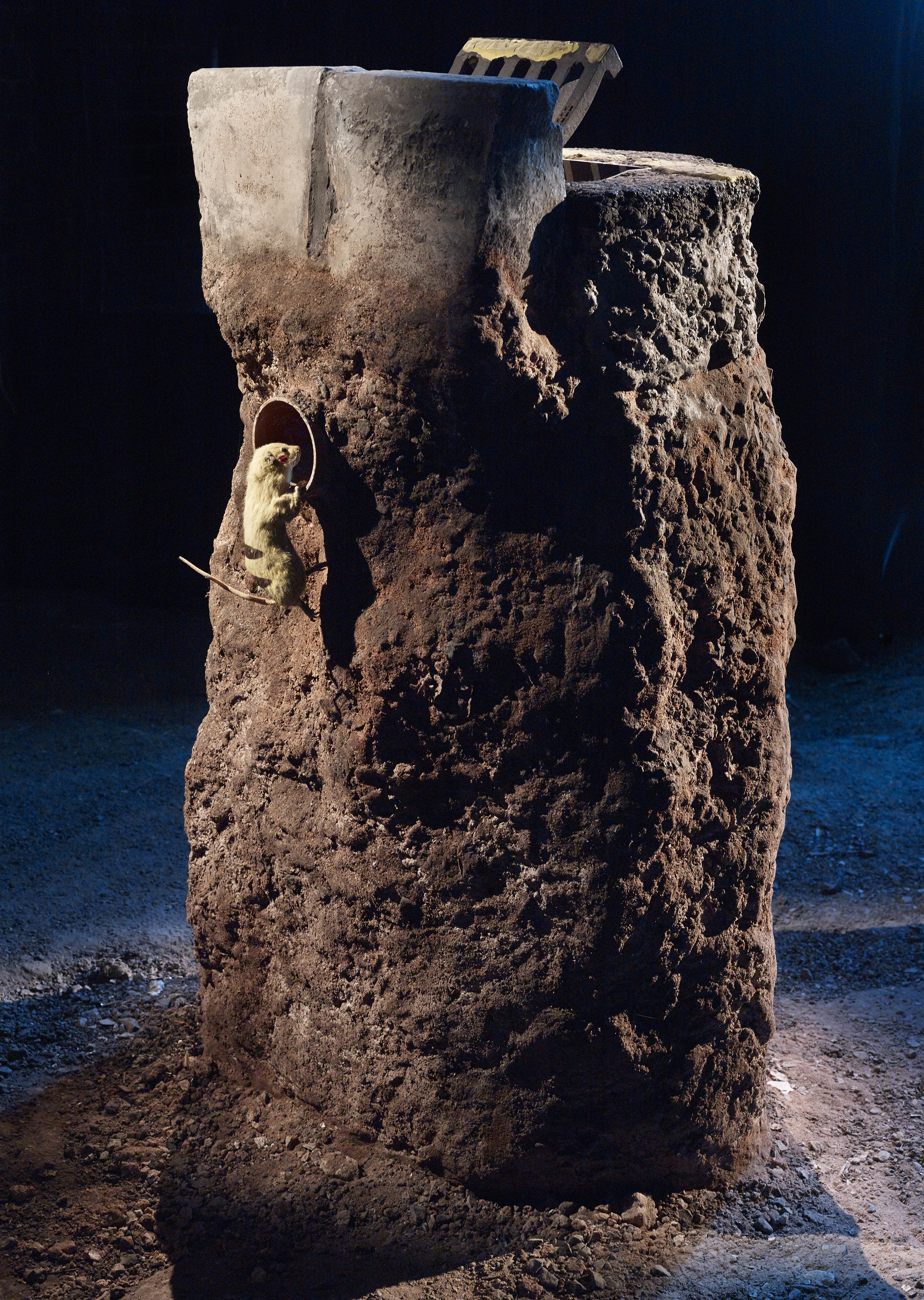
Photo: Michael Pollard
Chim↑Pom is an artist collective who started their activities hanging out on the streets of Shibuya, the cultural hub of Tokyo.
They didn’t go to art school, except for female member Ellie, and learned their skills by working various temp jobs including construction work.
Because of this background and relationship with streets, they have always had a deep interest in urban development and infrastructure, focusing on the filthier, darker, and underground side of society that people hide away from - like trash and pests, (and death). Their debut project was ‘Super Rat’, which is displayed here. Super Rat is a nickname of the rats in Tokyo, coined by Tokyo’s pest control. They have become immune to poison, used to traps, and become even smarter and stronger, and increased explosively in the city. Rats can be carriers of disease, which makes them a symbol of unhygienic wild animals living in big cities.
However, Chim ↑ Pom sees these Super Rats as resilient, ever-evolving creatures, and consider this work as a kind of self-portrait. The taxidermied rats resemble Pikachu, an iconic character from Japanese manga and anime culture. At A Drunk Pandemic, the ground and underground are connected and displayed together with a model representing sewer infrastructure.
During the epidemic, there were many cholera patients among labourers, poorer and older people, and richer people thought of them as immoral. This led to an idea of cholera as equal to immorality. In order to fight this ‘immoral disease’, living environments of these ‘immoral people’ needed to be improved. It is said that a hygienic revolution started from this type of thinking.
Given that Chim↑Pom’s practice largely deals with urban issues and the question of morality––what is considered moral, and immoral, and why––we hope it’s more clear why they became interested in the history of this tunnel.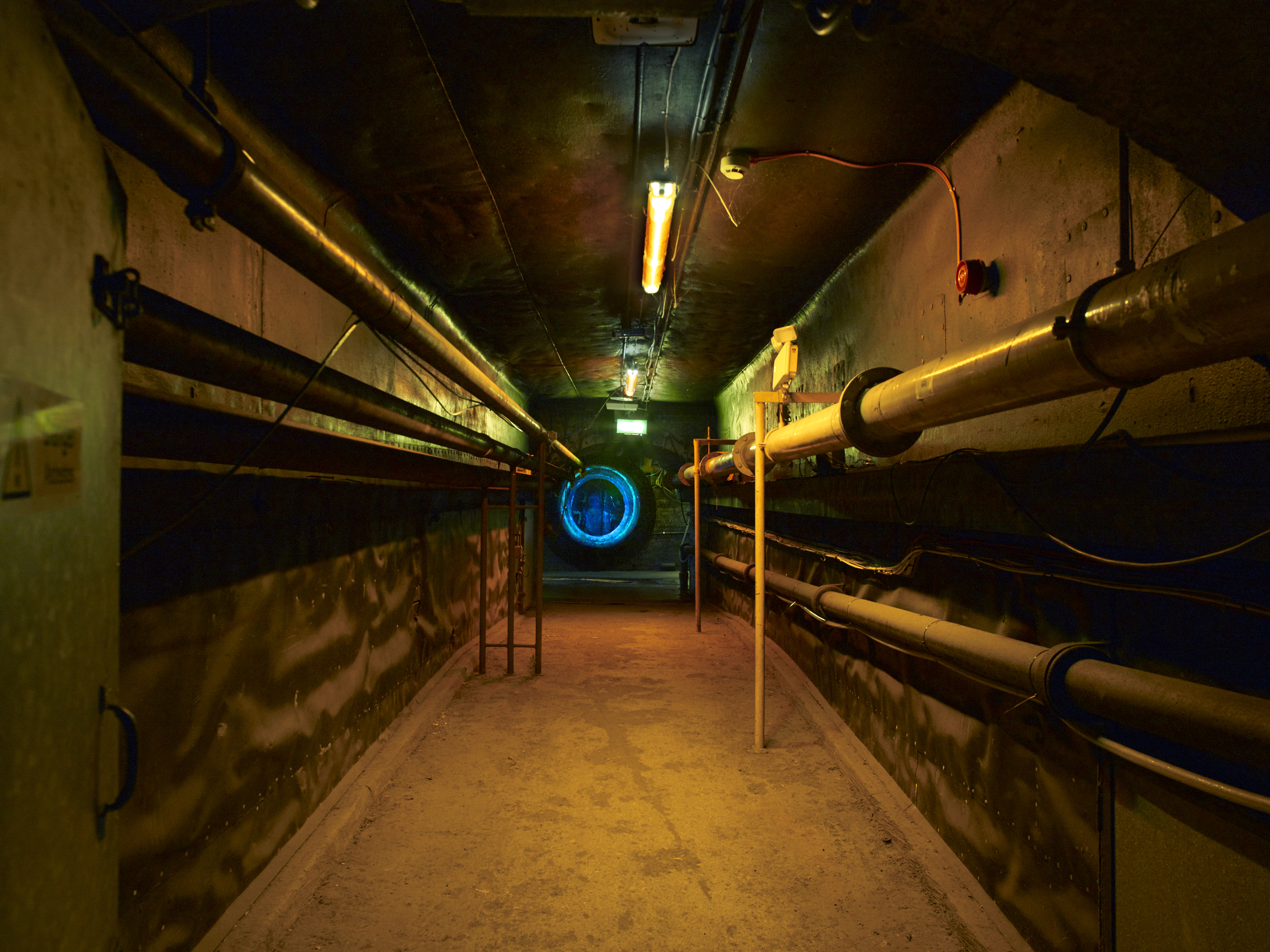
Photo: Michael Pollard
This is a video work depicting Tokyo sewage underneath a manhole. The title is ‘Asshole of Tokyo’. A manhole which is an entrance to a sewage is indeed an asshole of a city. At the same time, this title self-references Chim ↑ Pom’s position within Japanese society.
- ---
A Drop of Pandemic BreweryA Drop of Pandemic Brewery open/close -
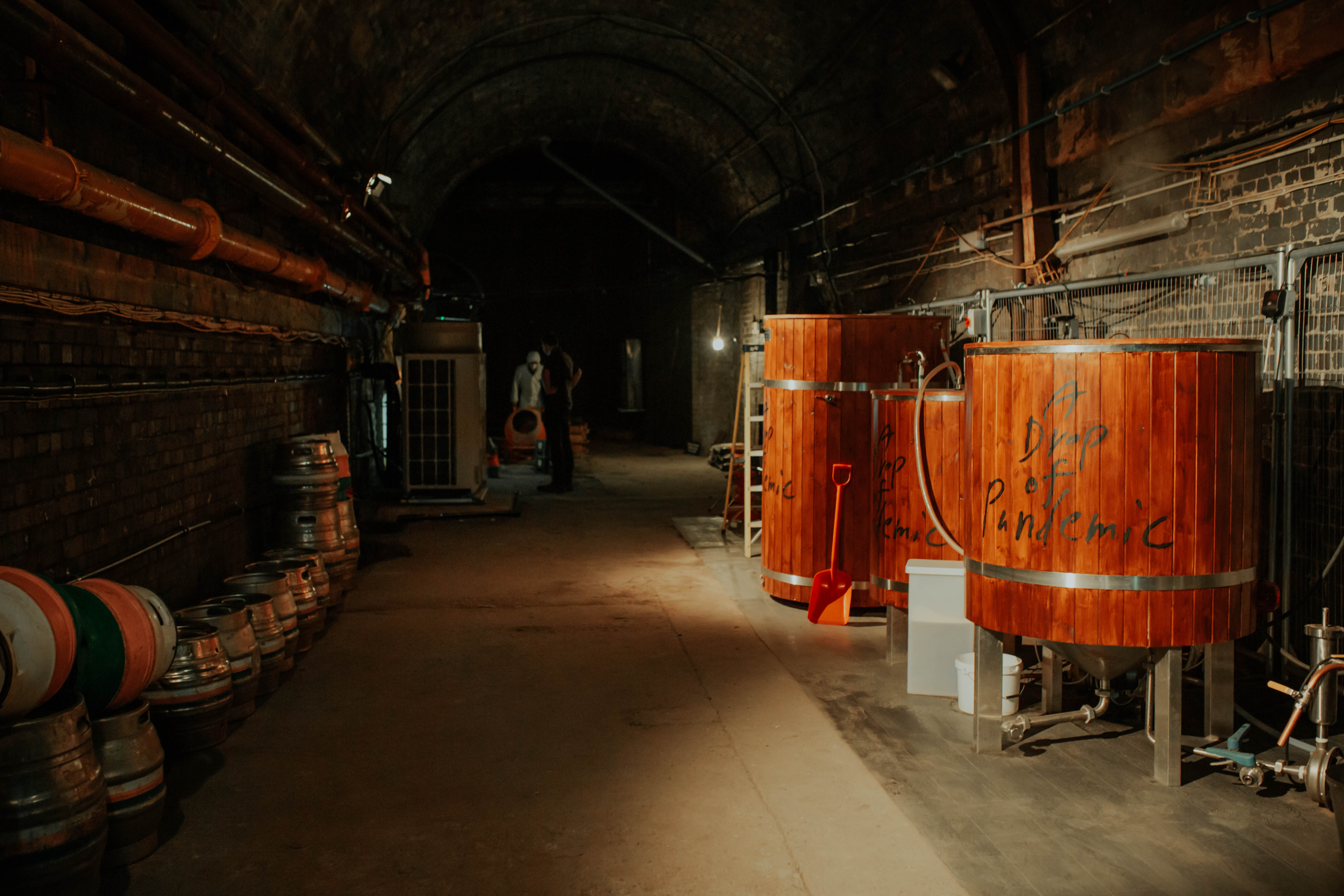
Photo: Rob Connor
This is the Drop of Pandemic brewery. You can taste this beer at the end of the tour but the only beer that you can drink is the "Environmental Health Approved Edition", which was made by temporarily covering this place with a tent. What is being created now is the " Environmental Health Unauthorized Edition", so this is not legally regarded as consumable. The beer we will give you is very safe.
There are four types of beer edition of Pale Ale, Ale, Dark, and Unapproved edition. Making wort with wheat and hot water in this barrel, and add pop and smell while boiling in this barrel. The hop is from Japan.
Cholera is a bacteria while yeast is a fungus, and both microbes have coexisted with people. Back then, beer was drunk in order to prevent cholera.
The consumption of beer was a popular pastime for the working classes, with the public house being at the heart of the community.Photo: Chim↑Pom
- ---
Piss BuildingPiss Building open/close -
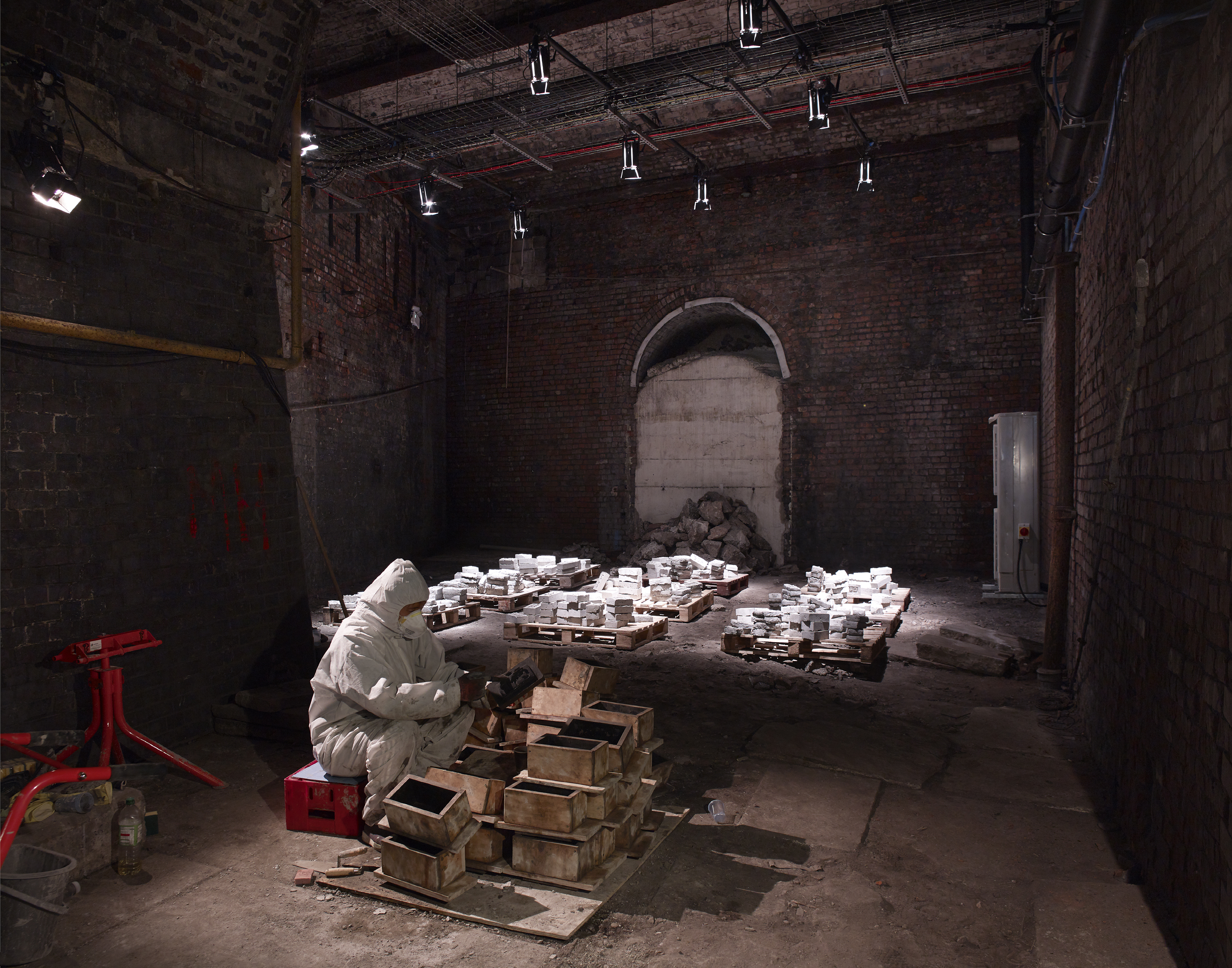
Photo: Michael Pollard
These are cemented bricks made from the urine of the people who have drunk beer here, and it is a part of the Chim↑Pom project called ‘Piss Building’.
Because typical symptoms of cholera are severe diarrhoea and dehydration, cholera, beer and toilets have a strong relationship with each other. At the time of the outbreak of cholera, all the sewage flowed from the gutter on the road to the river, causing various infectious diseases.
Bricks are neutral materials for buildings, walls and even streets. They are diffused from the factory to every part of the city as one of the foundations of any construction process. Chim ↑ Pom bring the bricks made here to places around the city where repair and maintenance are needed.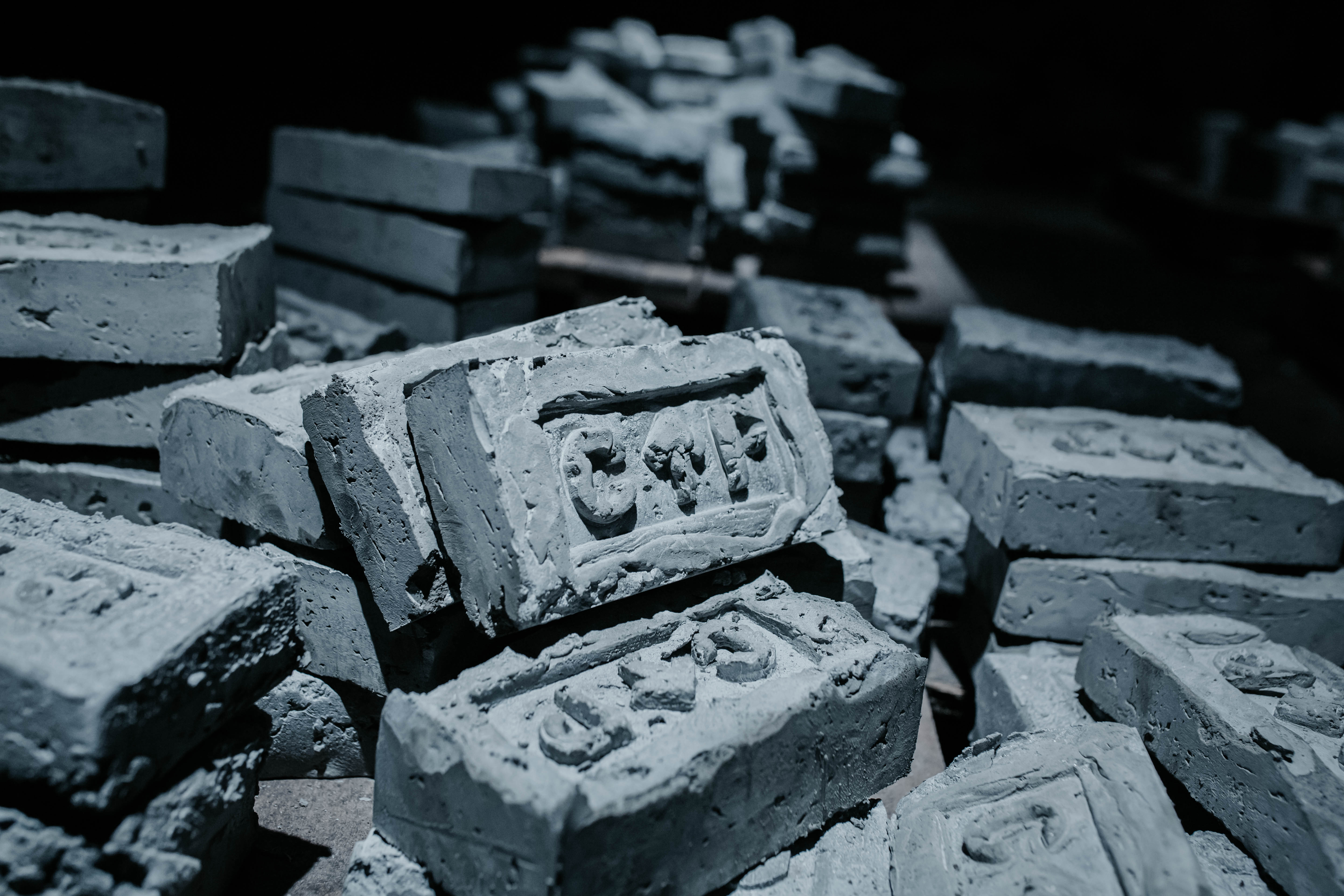
Photo: Rob Connor
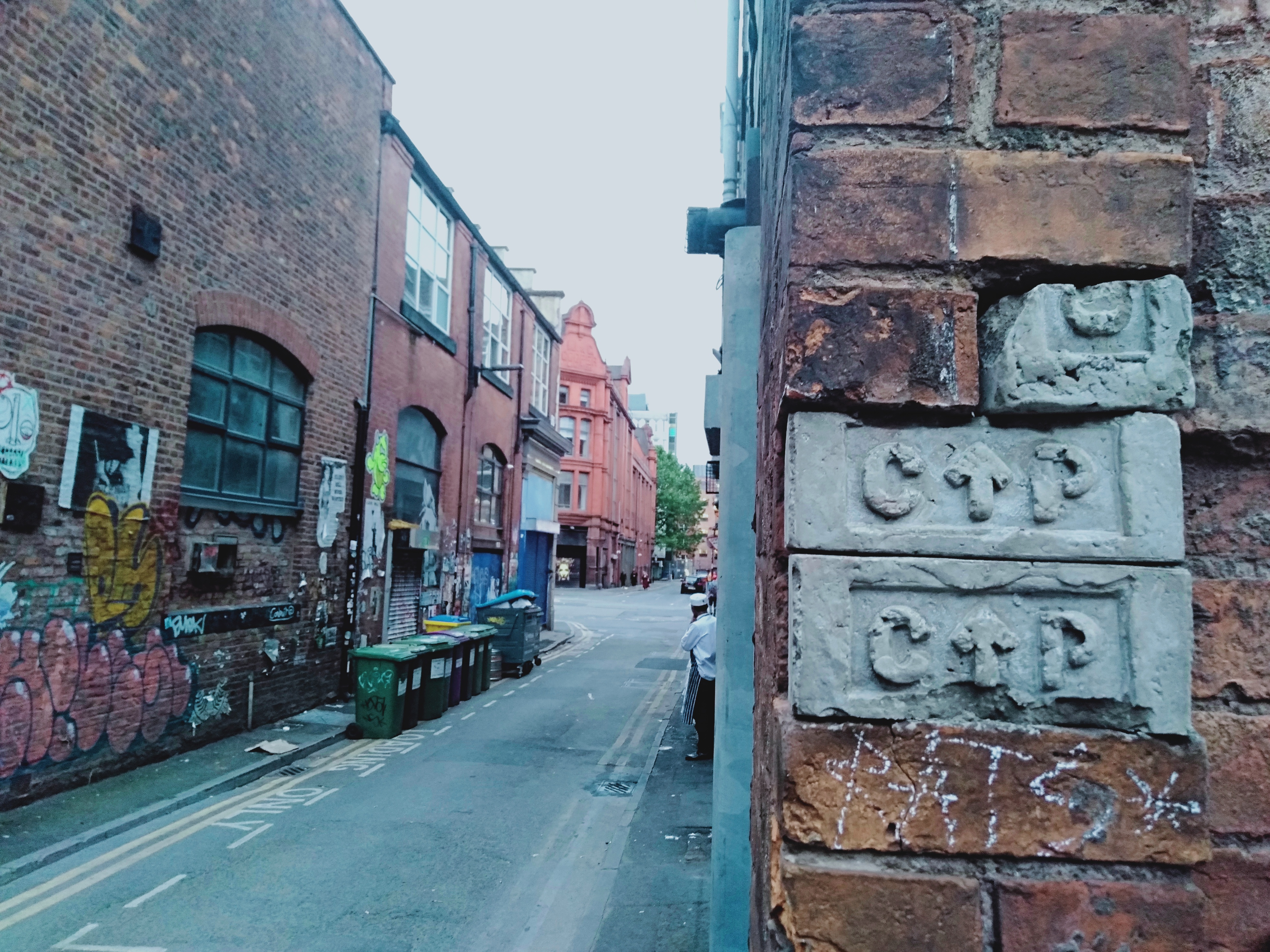
Photo: Chim↑Pom
- ---
Pub PandemicPub Pandemic open/close -
Photo: Chim↑Pom
This is a public toilet converted into a pub.
Apart from selling beer, the pub in the time of cholera also had multiple uses including a place to hold official business such as coroner’s inquests. It was also a place where organisations were formed, such as burial clubs, insurance companies and friendly societies- that had practical and social functions.
Now, you are going to taste A Drop of Pandemic at this public toilet. The first pint is free. A member of Chim ↑ Pom will serve you. You can urinate at this toilet, too. Your urine will be used for ‘Piss Building’. Pub's name is Pub Pandemic.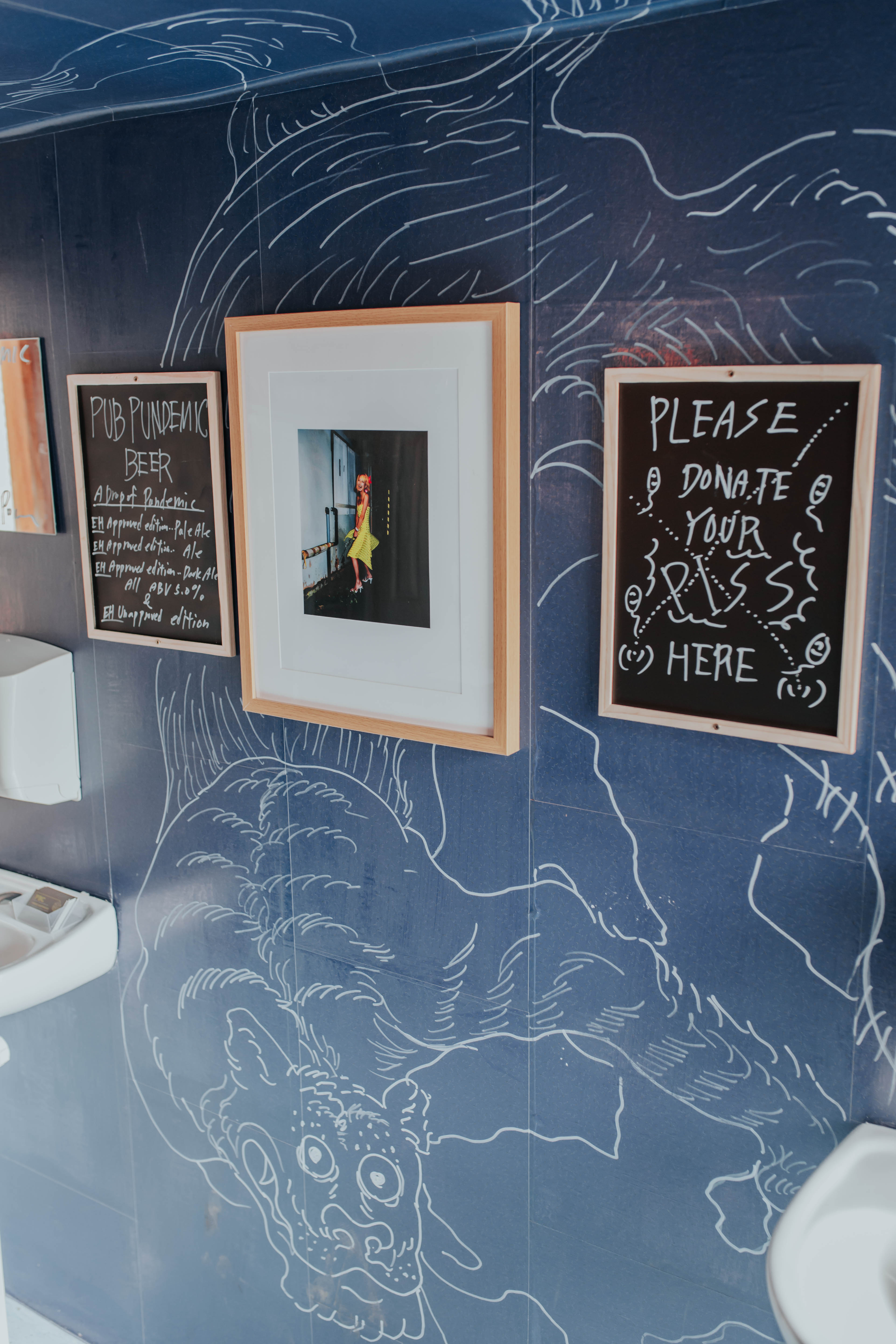
Photo: Rob Connor
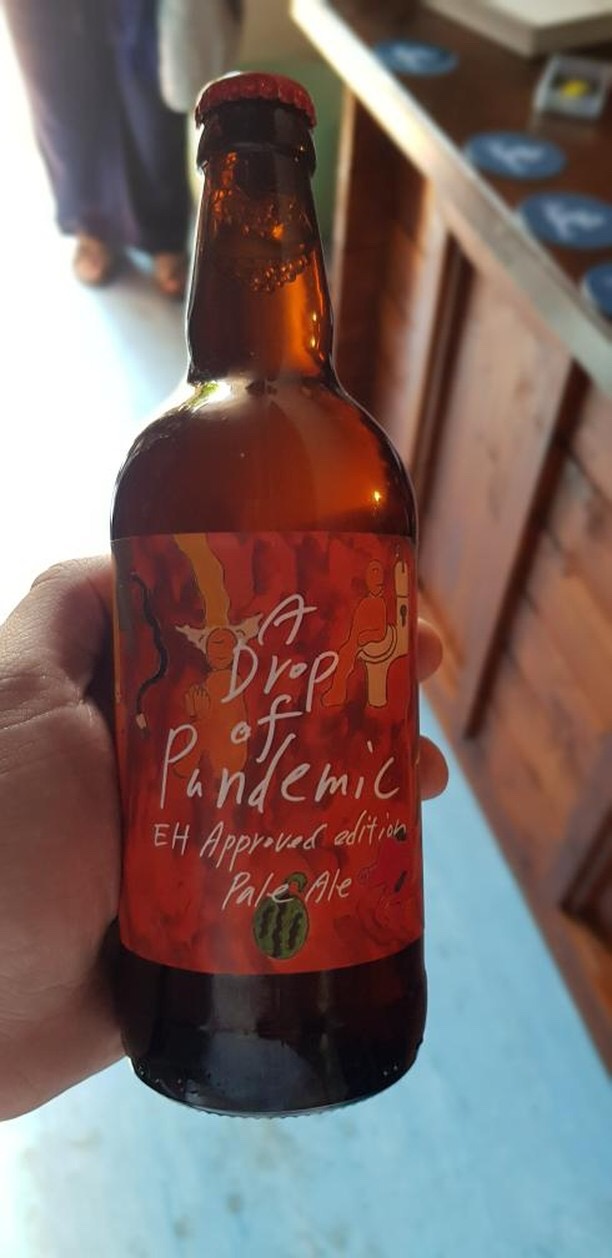
Photo: Chim↑Pom
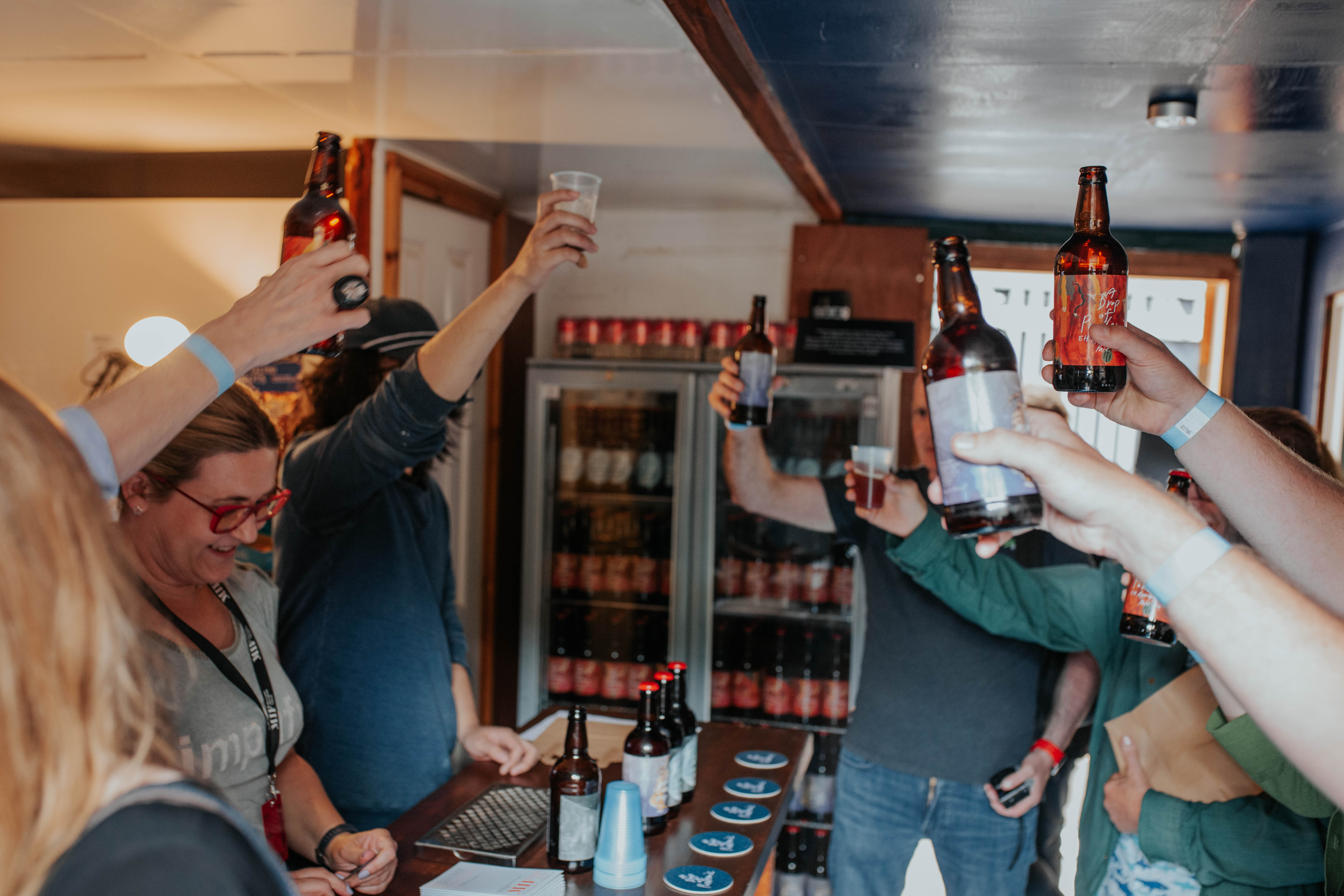
Photo: Rob Connor
- ---
Installation viewInstallation view open/close -
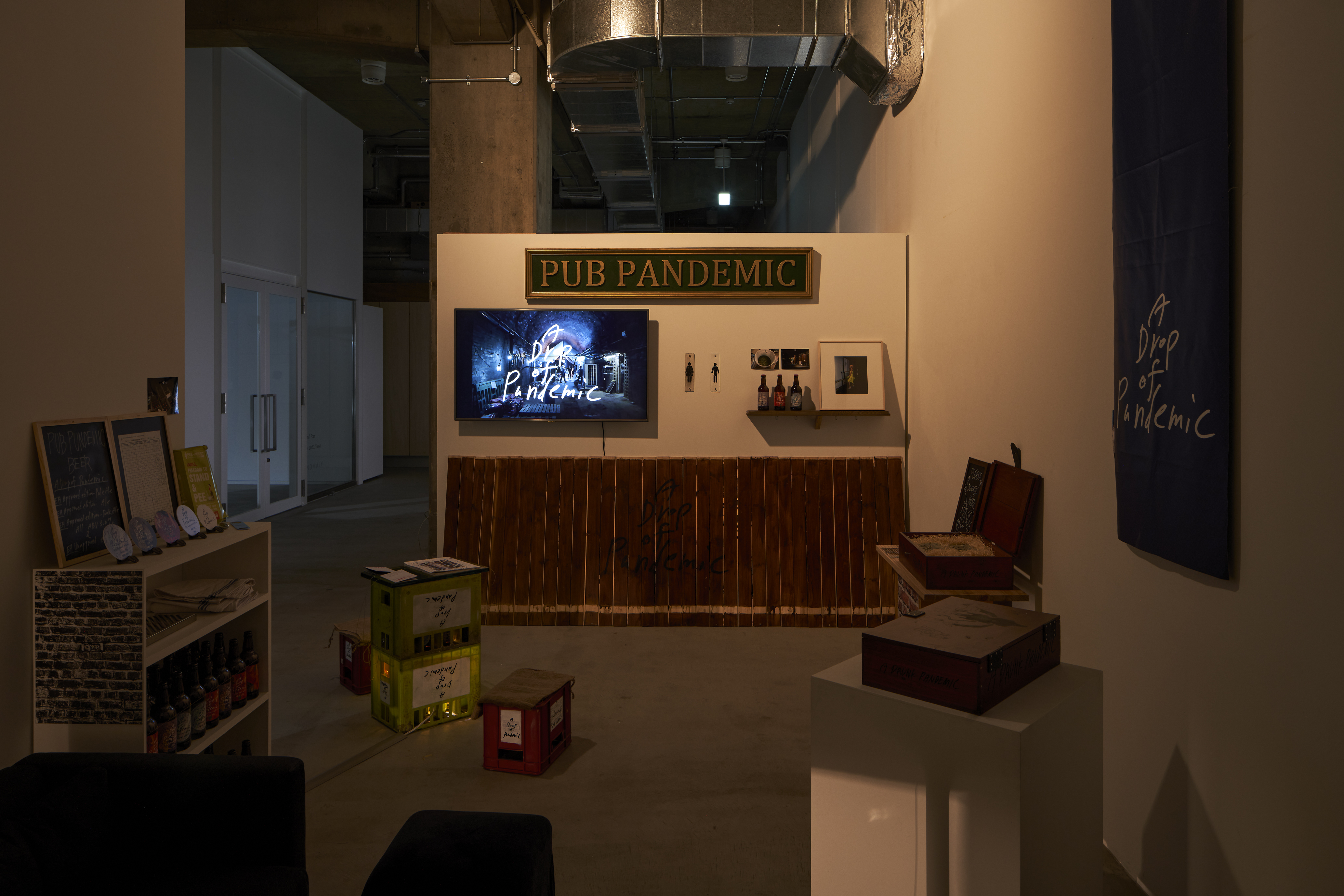
A Drunk PandemicA Drunk Pandemic
2019/2020 ミクスト・メディア・インスタレーション、サイズ可変
展示風景:「May, 2020, Tokyo / A Drunk Pandemic」ANOMALY(東京)2020年
撮影:森田兼次
Courtesy of the artists and ANOMALY2019/2020 Mixed media installation, Dimensions variable
Installation view: Chim↑Pom: May, 2020, Tokyo / A Drunk Pandemic, ANOMALY, Tokyo, 2020
Photo: Morita Kenji
Courtesy of the artists and ANOMALY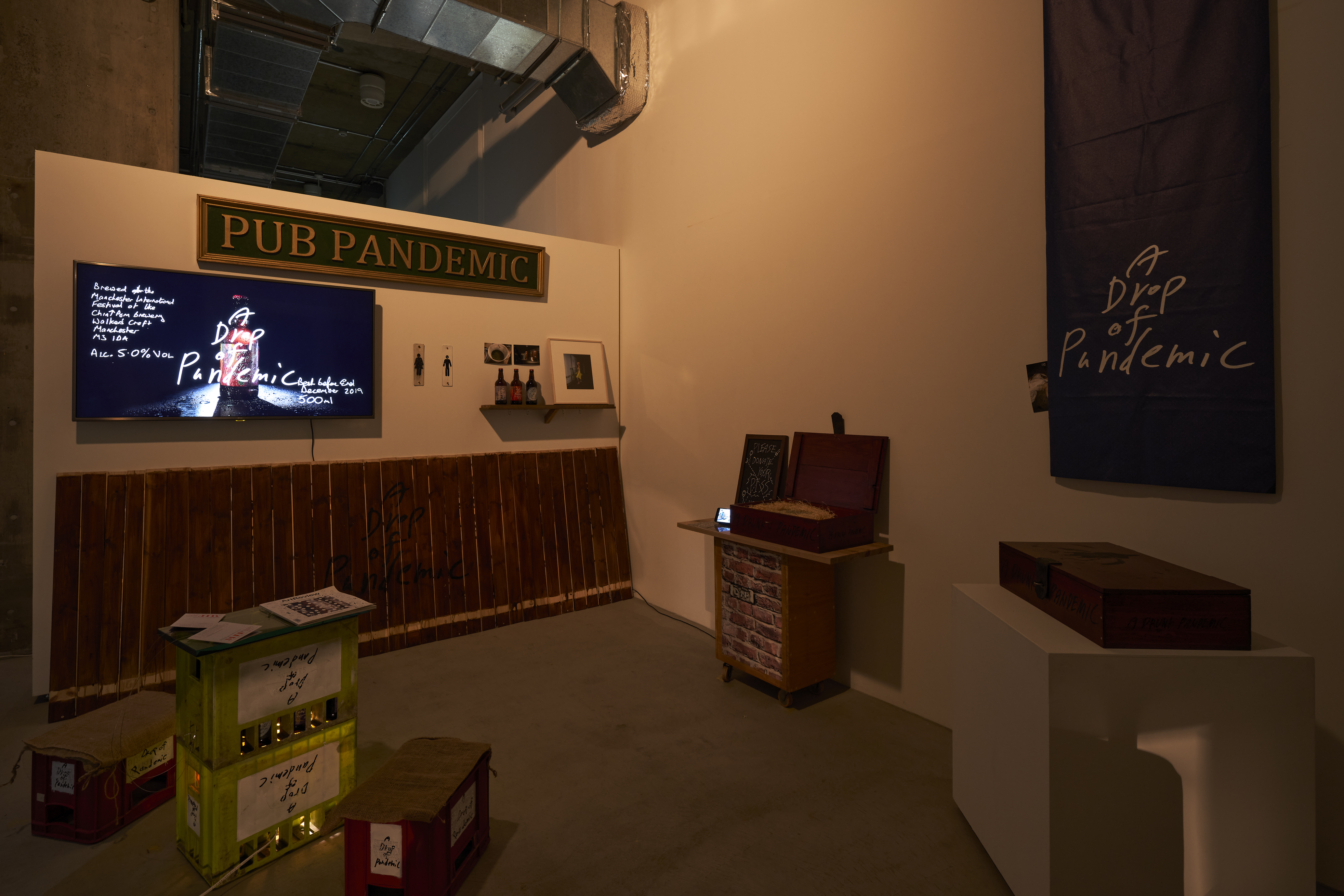
A Drunk PandemicA Drunk Pandemic
2019/2020 ミクスト・メディア・インスタレーション、サイズ可変
展示風景:「May, 2020, Tokyo / A Drunk Pandemic」ANOMALY(東京)2020年
撮影:森田兼次
Courtesy of the artists and ANOMALY2019/2020 Mixed media installation, Dimensions variable
Installation view: Chim↑Pom: May, 2020, Tokyo / A Drunk Pandemic, ANOMALY, Tokyo, 2020
Photo: Morita Kenji
Courtesy of the artists and ANOMALY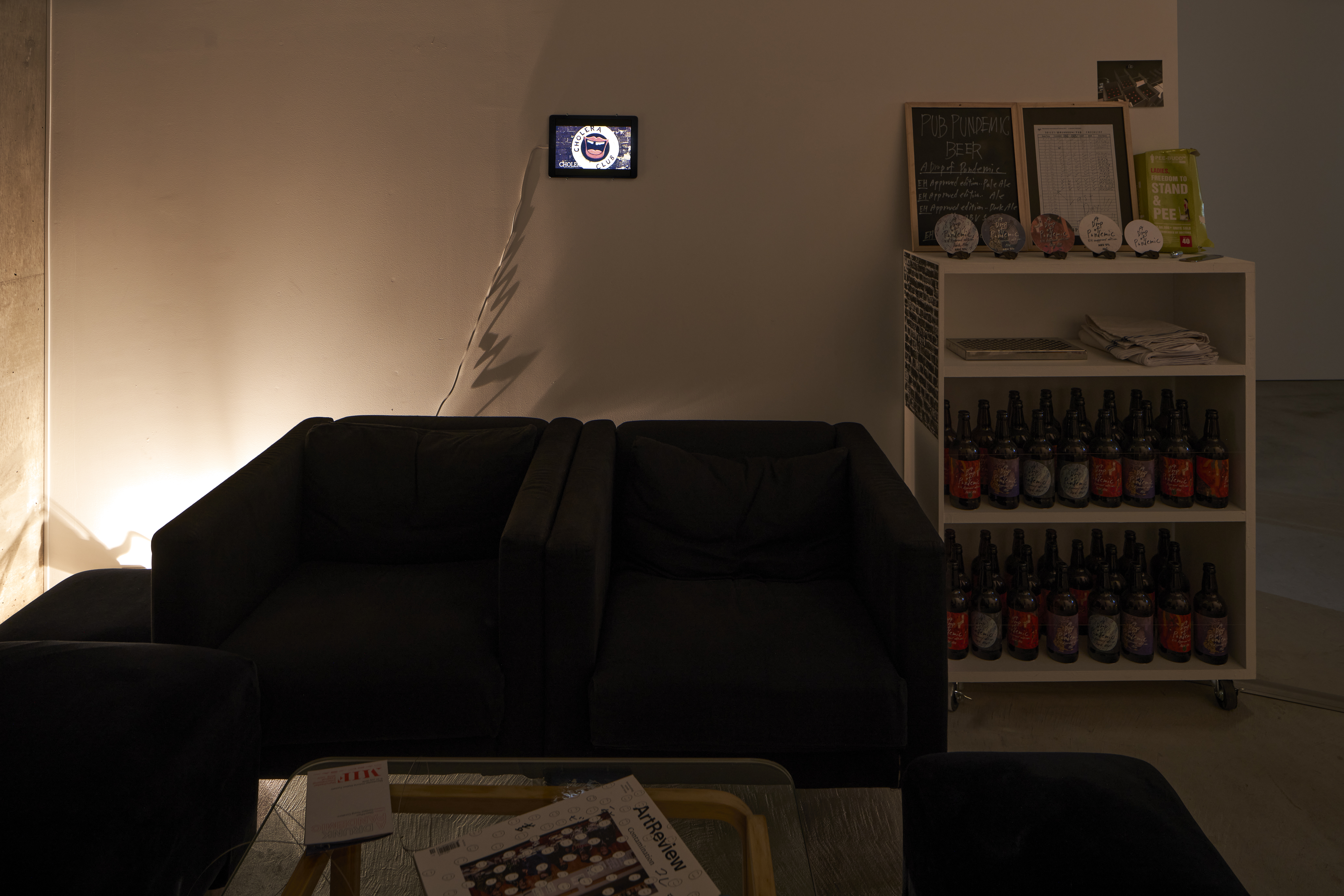
A Drunk PandemicA Drunk Pandemic
2019/2020 ミクスト・メディア・インスタレーション、サイズ可変
展示風景:「May, 2020, Tokyo / A Drunk Pandemic」ANOMALY(東京)2020年
撮影:森田兼次
Courtesy of the artists and ANOMALY2019/2020 Mixed media installation, Dimensions variable
Installation view: Chim↑Pom: May, 2020, Tokyo / A Drunk Pandemic, ANOMALY, Tokyo, 2020
Photo: Morita Kenji
Courtesy of the artists and ANOMALY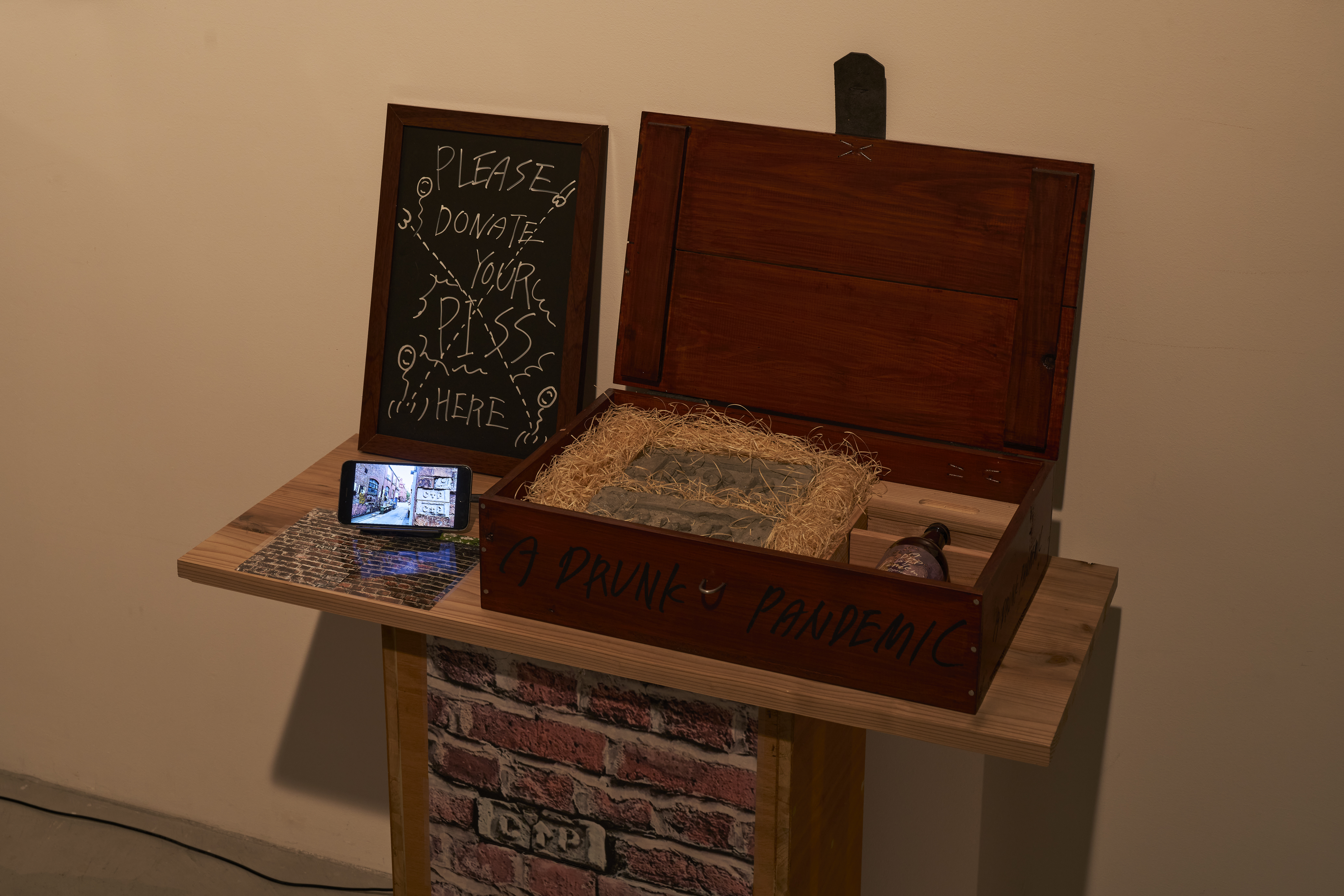
A Drunk PandemicA Drunk Pandemic
2019/2020 ミクスト・メディア・インスタレーション、サイズ可変
展示風景:「May, 2020, Tokyo / A Drunk Pandemic」ANOMALY(東京)2020年
撮影:森田兼次
Courtesy of the artists and ANOMALY2019/2020 Mixed media installation, Dimensions variable
Installation view: Chim↑Pom: May, 2020, Tokyo / A Drunk Pandemic, ANOMALY, Tokyo, 2020
Photo: Morita Kenji
Courtesy of the artists and ANOMALY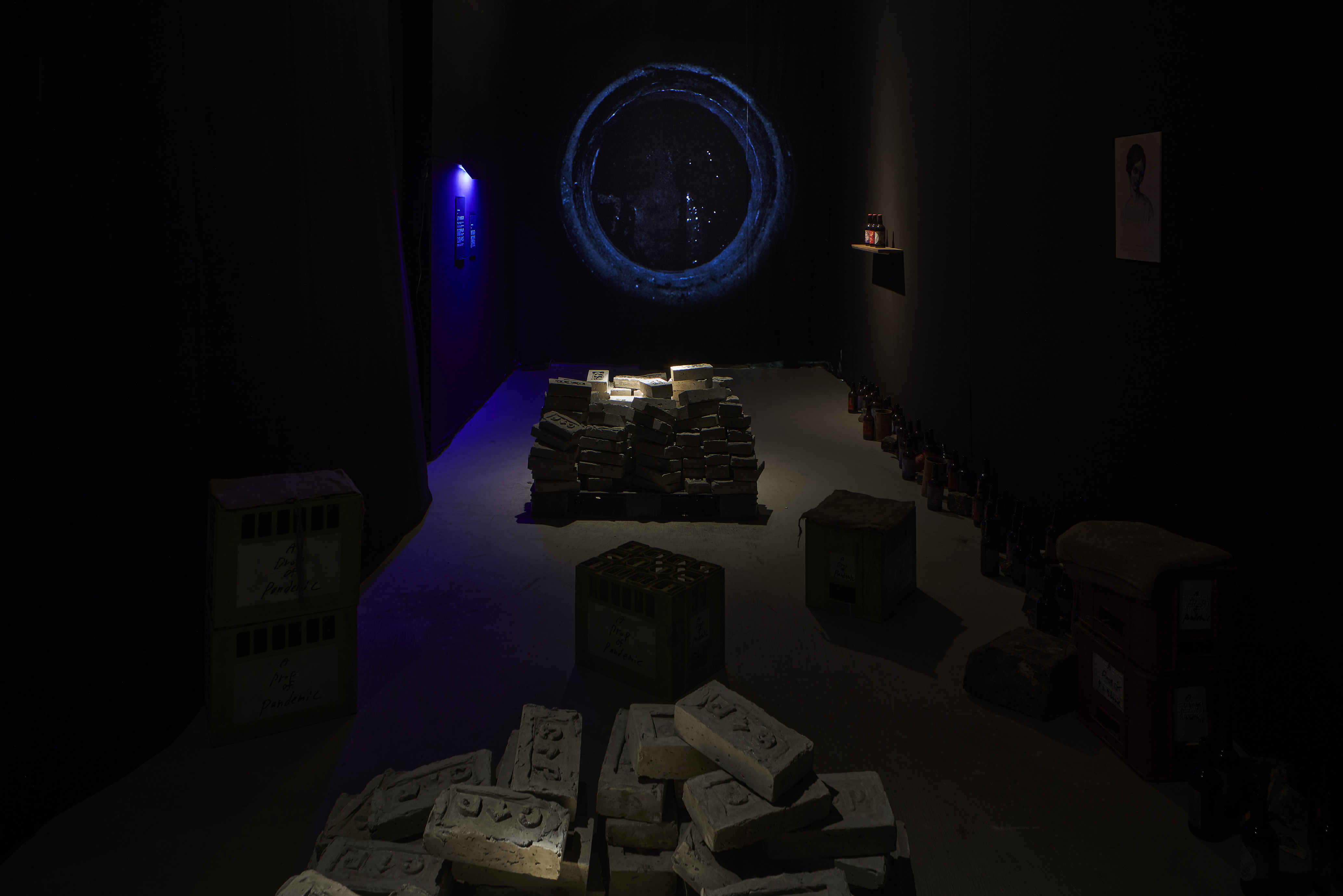
A Drunk PandemicA Drunk Pandemic
2019/2020 ミクスト・メディア・インスタレーション、サイズ可変
展示風景:「May, 2020, Tokyo / A Drunk Pandemic」ANOMALY(東京)2020年
撮影:森田兼次
Courtesy of the artists and ANOMALY2019/2020 Mixed media installation, Dimensions variable
Installation view: Chim↑Pom: May, 2020, Tokyo / A Drunk Pandemic, ANOMALY, Tokyo, 2020
Photo: Morita Kenji
Courtesy of the artists and ANOMALY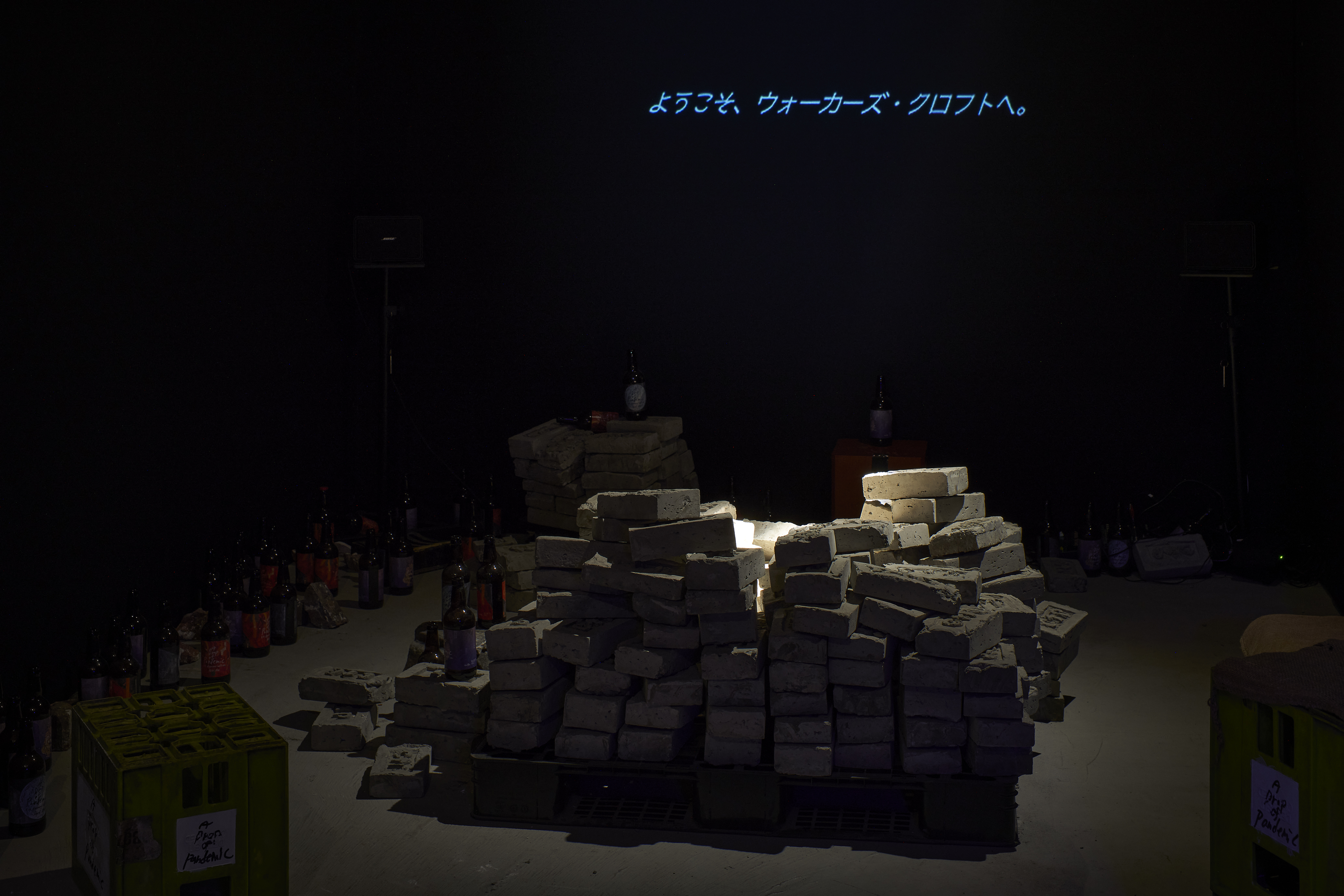
A Drunk PandemicA Drunk Pandemic
2019/2020 ミクスト・メディア・インスタレーション、サイズ可変
展示風景:「May, 2020, Tokyo / A Drunk Pandemic」ANOMALY(東京)2020年
撮影:森田兼次
Courtesy of the artists and ANOMALY2019/2020 Mixed media installation, Dimensions variable
Installation view: Chim↑Pom: May, 2020, Tokyo / A Drunk Pandemic, ANOMALY, Tokyo, 2020
Photo: Morita Kenji
Courtesy of the artists and ANOMALY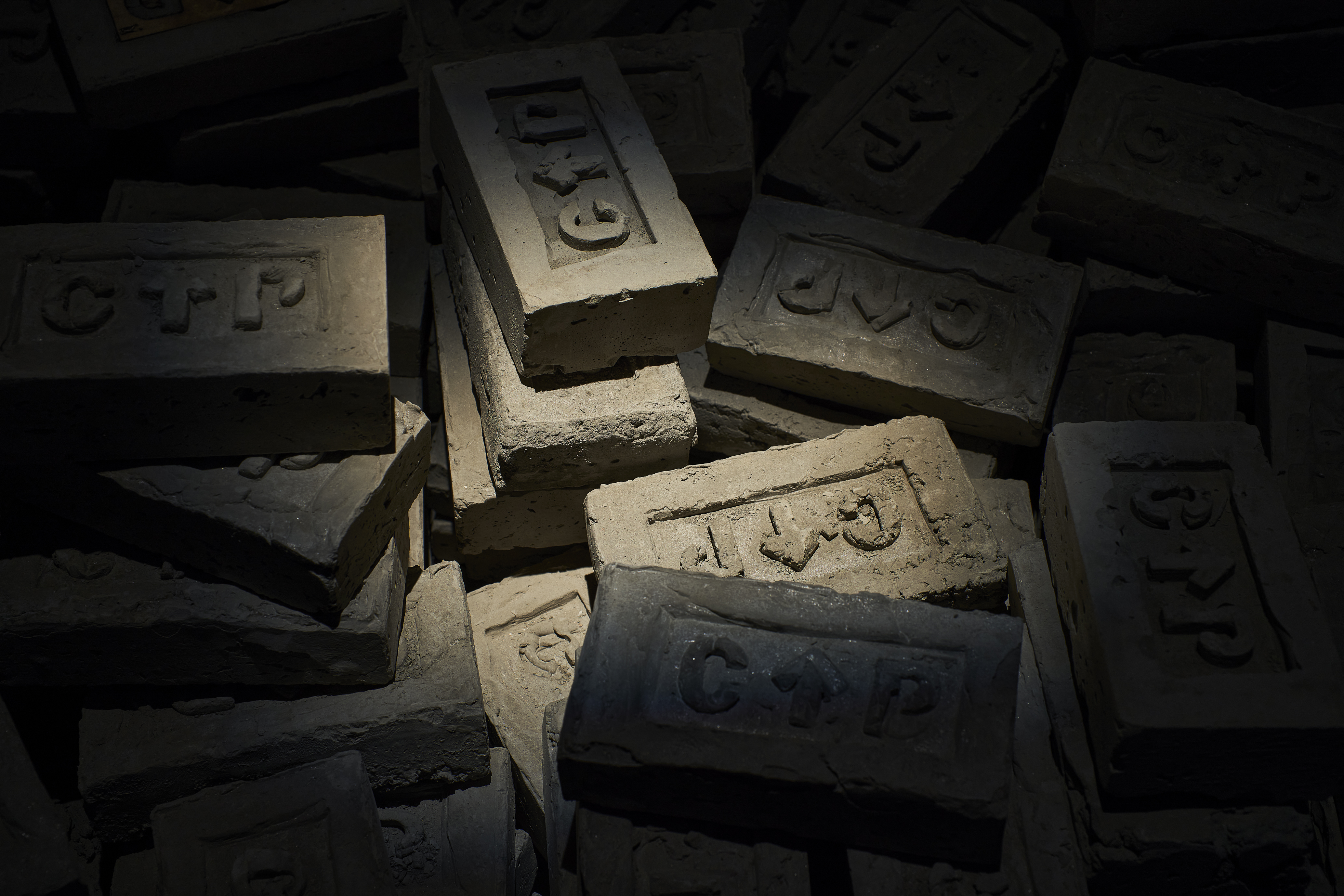
A Drunk PandemicA Drunk Pandemic
2019/2020 ミクスト・メディア・インスタレーション、サイズ可変
展示風景:「May, 2020, Tokyo / A Drunk Pandemic」ANOMALY(東京)2020年
撮影:森田兼次
Courtesy of the artists and ANOMALY2019/2020 Mixed media installation, Dimensions variable
Installation view: Chim↑Pom: May, 2020, Tokyo / A Drunk Pandemic, ANOMALY, Tokyo, 2020
Photo: Morita Kenji
Courtesy of the artists and ANOMALY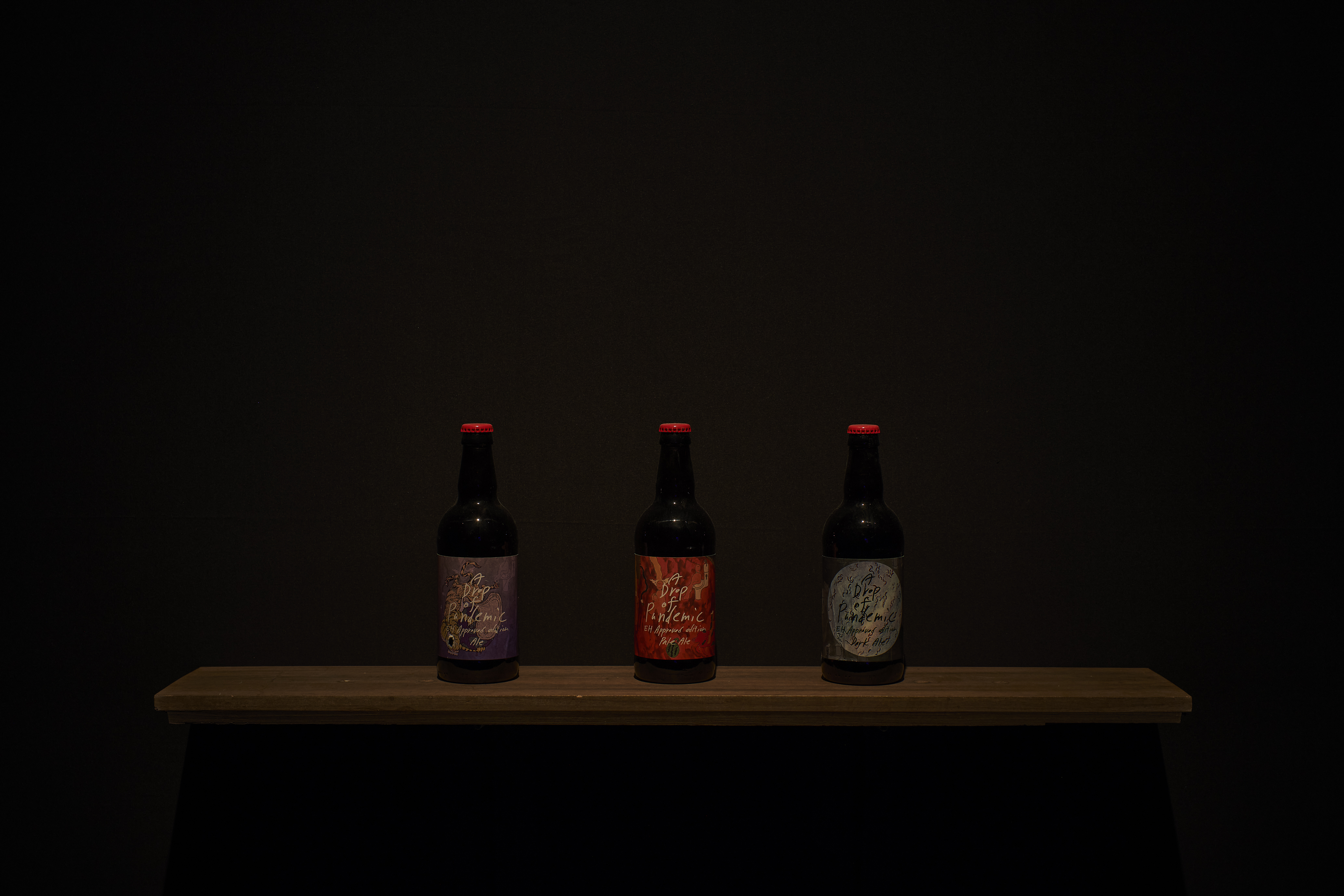
A Drunk PandemicA Drunk Pandemic
2019/2020 ミクスト・メディア・インスタレーション、サイズ可変
展示風景:「May, 2020, Tokyo / A Drunk Pandemic」ANOMALY(東京)2020年
撮影:森田兼次
Courtesy of the artists and ANOMALY2019/2020 Mixed media installation, Dimensions variable
Installation view: Chim↑Pom: May, 2020, Tokyo / A Drunk Pandemic, ANOMALY, Tokyo, 2020
Photo: Morita Kenji
Courtesy of the artists and ANOMALY
A Drunk PandemicA Drunk Pandemic
2019/2020 ミクスト・メディア・インスタレーション、サイズ可変
展示風景:「May, 2020, Tokyo / A Drunk Pandemic」ANOMALY(東京)2020年
撮影:森田兼次
Courtesy of the artists and ANOMALY2019/2020 Mixed media installation, Dimensions variable
Installation view: Chim↑Pom: May, 2020, Tokyo / A Drunk Pandemic, ANOMALY, Tokyo, 2020
Photo: Morita Kenji
Courtesy of the artists and ANOMALY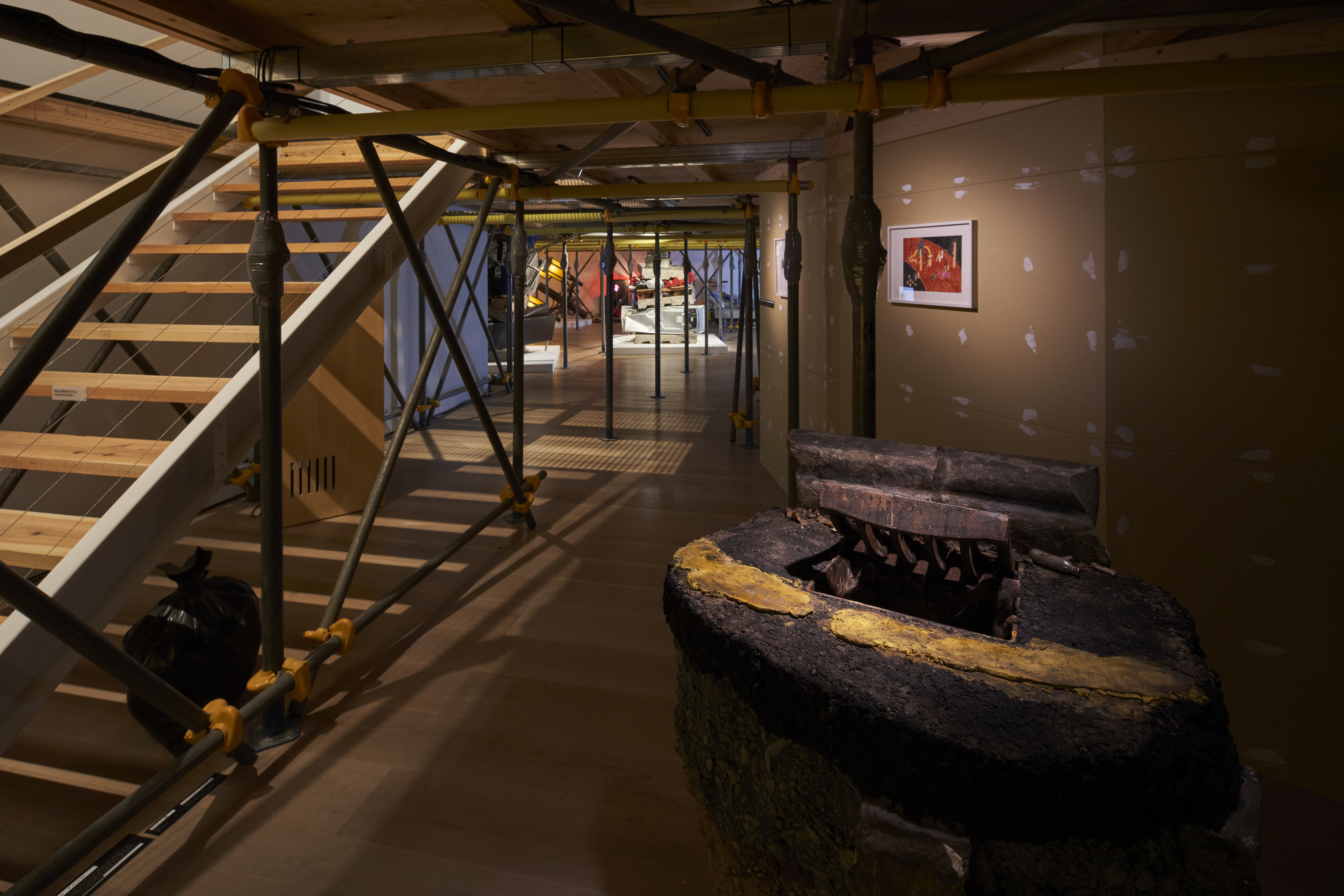
A Drunk PandemicA Drunk Pandemic
2019/2022 サイズ可変
展示風景:「Chim↑Pom展:ハッピースプリング」森美術館(東京)2022年
撮影:森田兼次
画像提供:森美術館2022 Dimensions variable
Installation view: Chim↑Pom: Happy Spring, Mori Art Museum, Tokyo, 2022
Photo: Kenji Morita
Photo courtesy: Mori Art Museum, Tokyo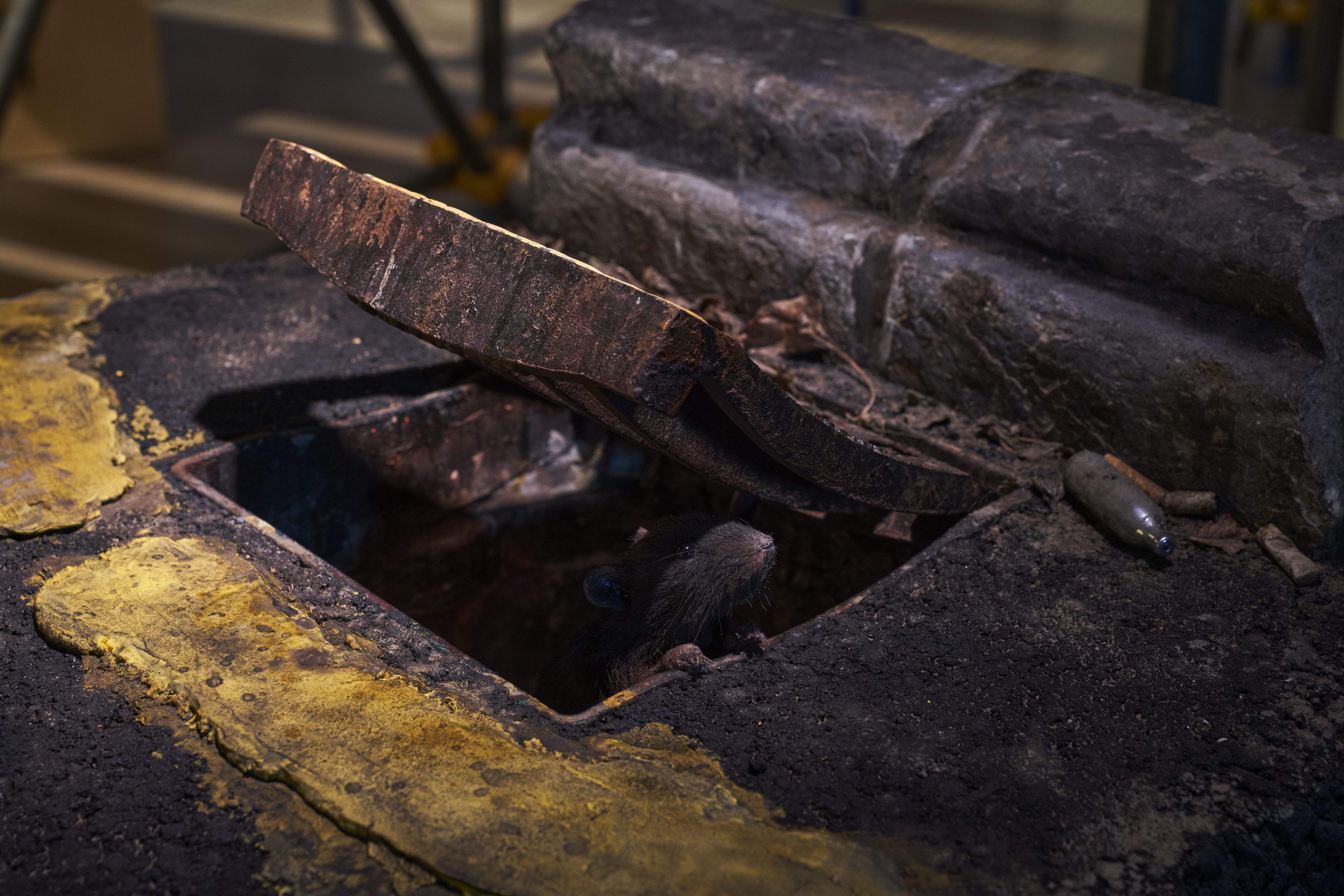
堪え難き・を堪えるスーパーラット ―酔いどれパンデミック― 森美術館バージョンENDURING the Unendurable SUPER RAT –A Drunk Pandemic– Mori Art Museum Version
2019/2022 ネズミの剥製、マンチェスターの縁石とレンガ、 鉄製排水溝蓋、アスファルト、FRP、路盤帯、 砂利、木材、石膏、アクリル絵具
展示風景:「Chim↑Pom展:ハッピースプリング」森美術館(東京)2022年
撮影:森田兼次
画像提供:森美術館2022 Stuffed rat, curbstone and brick collected in Manchester, iron drain strainer, asphalt, FRP, roadbed, grabble, wood, plaster, acrylic paint
Installation view: Chim↑Pom: Happy Spring, Mori Art Museum, Tokyo, 2022
Photo: Kenji Morita
Photo courtesy: Mori Art Museum, Tokyo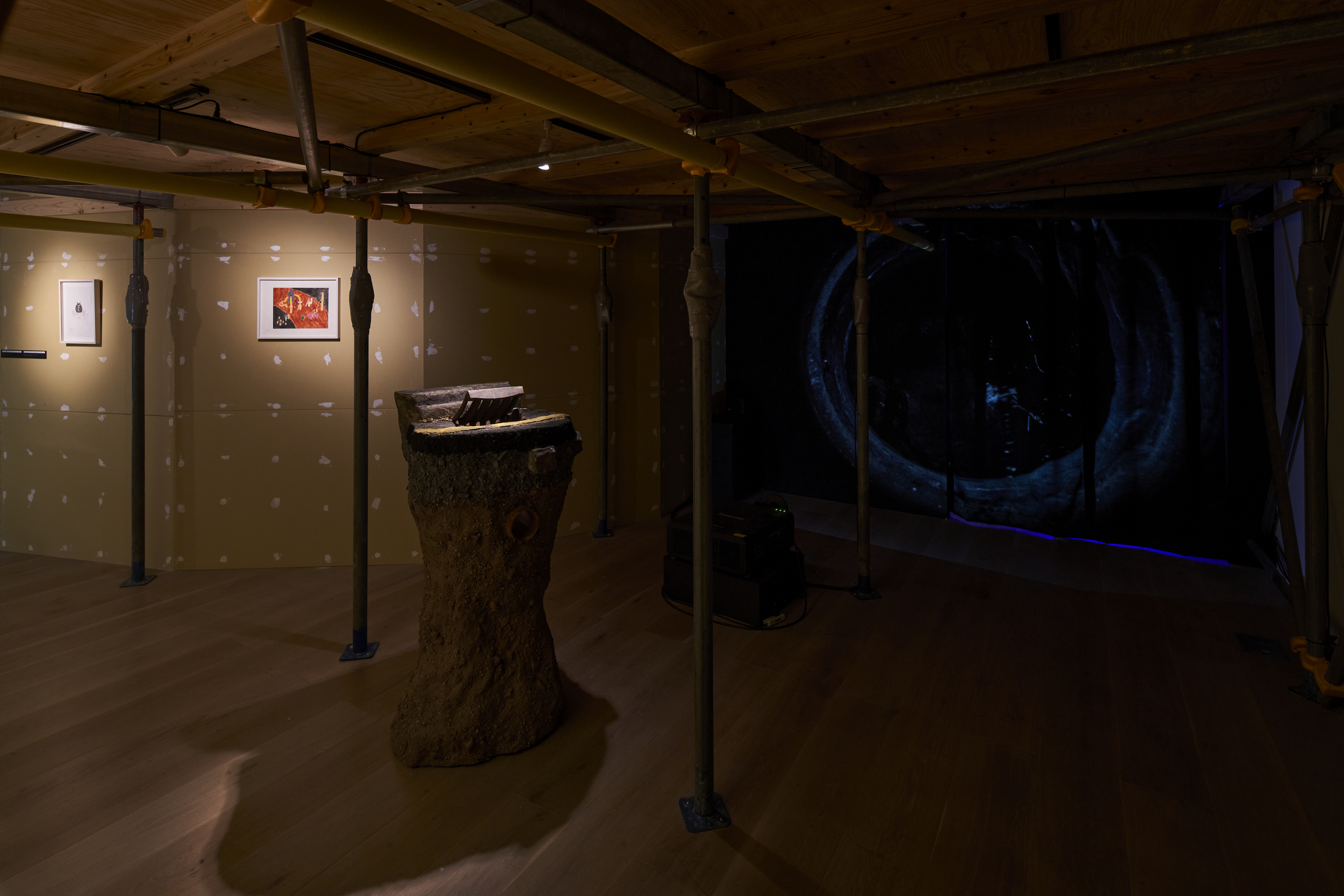
A Drunk PandemicA Drunk Pandemic
2019/2022 サイズ可変
展示風景:「Chim↑Pom展:ハッピースプリング」森美術館(東京)2022年
撮影:森田兼次
画像提供:森美術館2022 Dimensions variable
Installation view: Chim↑Pom: Happy Spring, Mori Art Museum, Tokyo, 2022
Photo: Kenji Morita
Photo courtesy: Mori Art Museum, Tokyo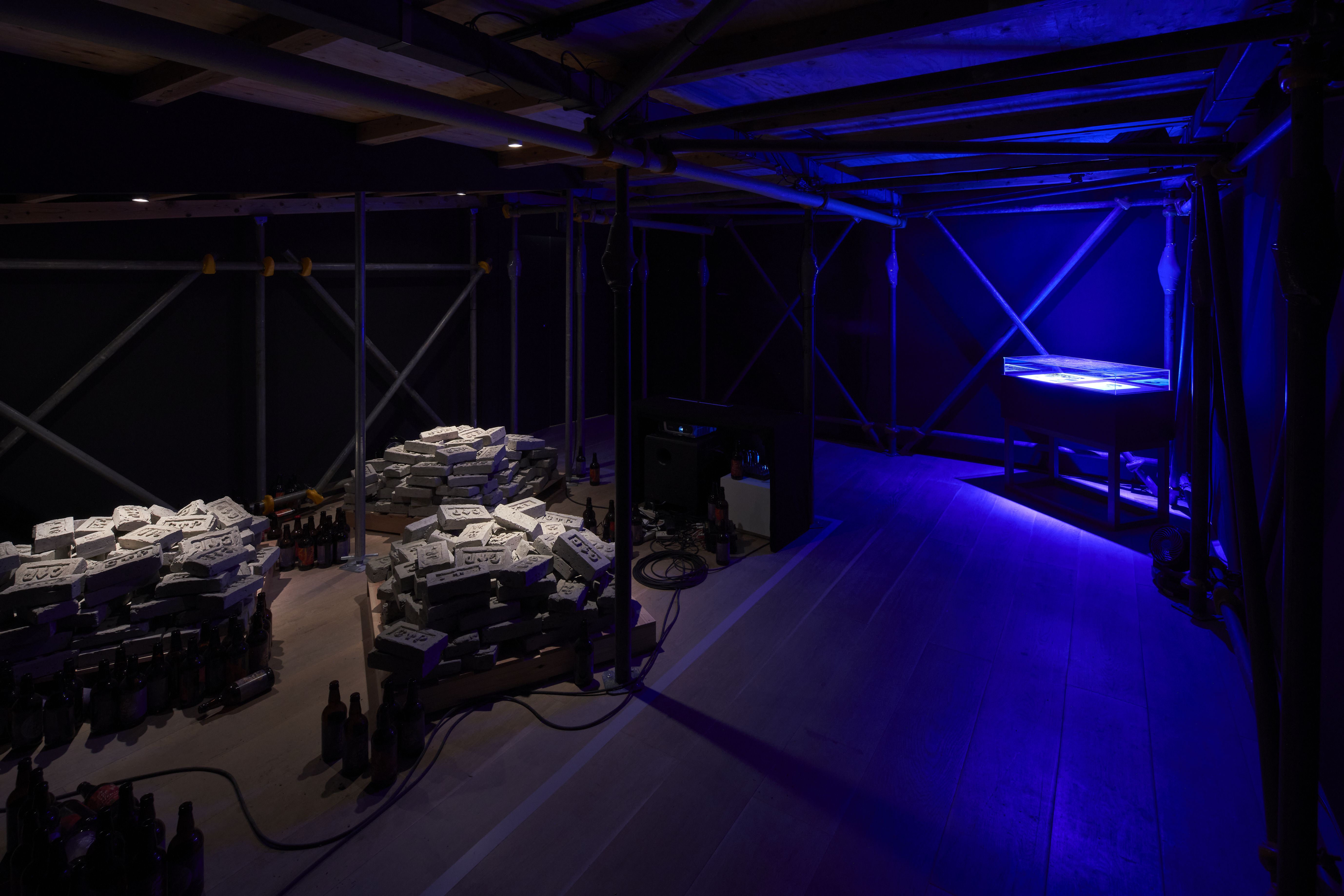
A Drunk PandemicA Drunk Pandemic
2019/2022 サイズ可変
展示風景:「Chim↑Pom展:ハッピースプリング」森美術館(東京)2022年
撮影:森田兼次
画像提供:森美術館2022 Dimensions variable
Installation view: Chim↑Pom: Happy Spring, Mori Art Museum, Tokyo, 2022
Photo: Kenji Morita
Photo courtesy: Mori Art Museum, Tokyo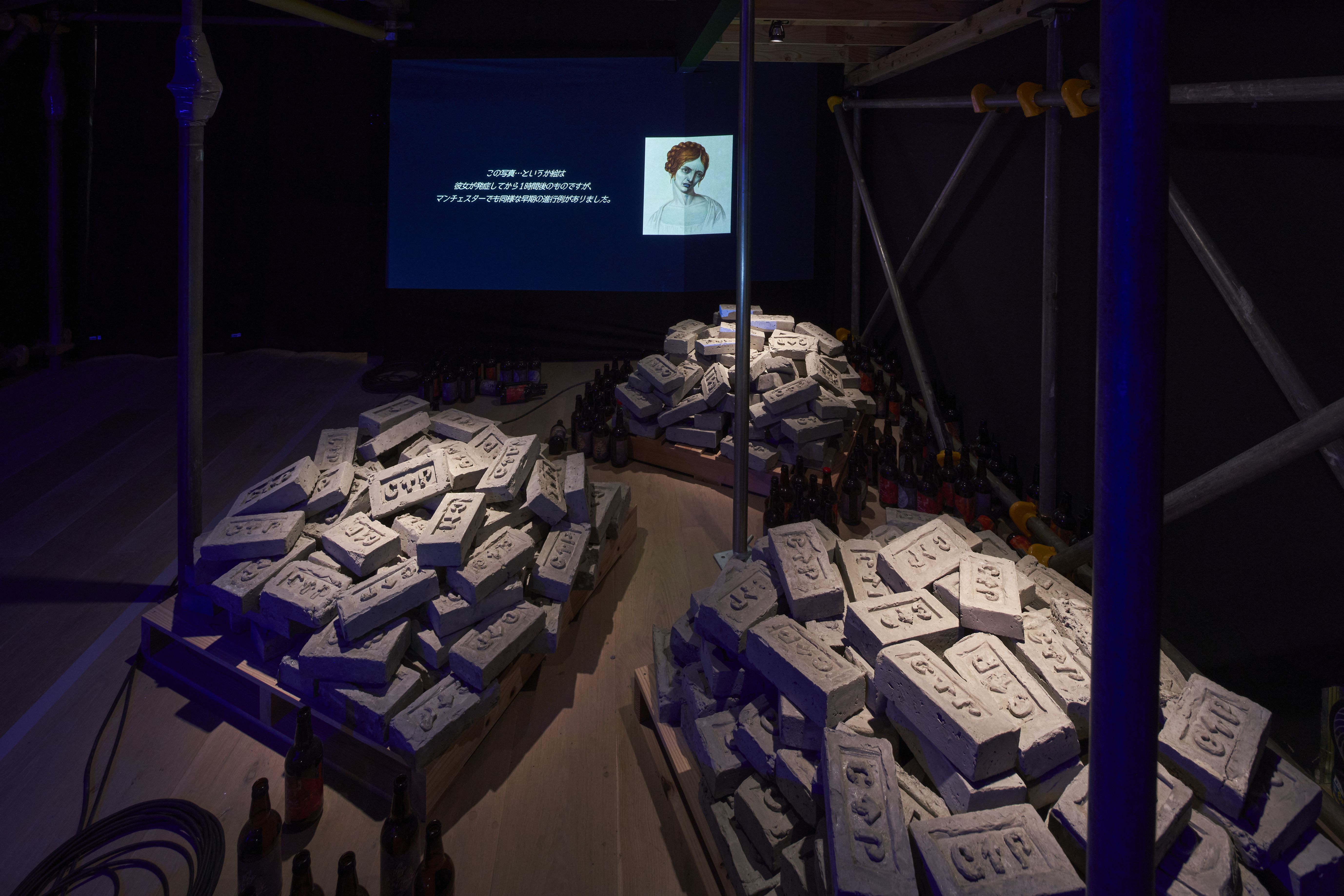
A Drunk PandemicA Drunk Pandemic
2019/2022 サイズ可変
展示風景:「Chim↑Pom展:ハッピースプリング」森美術館(東京)2022年
撮影:森田兼次
画像提供:森美術館2022 Dimensions variable
Installation view: Chim↑Pom: Happy Spring, Mori Art Museum, Tokyo, 2022
Photo: Kenji Morita
Photo courtesy: Mori Art Museum, Tokyo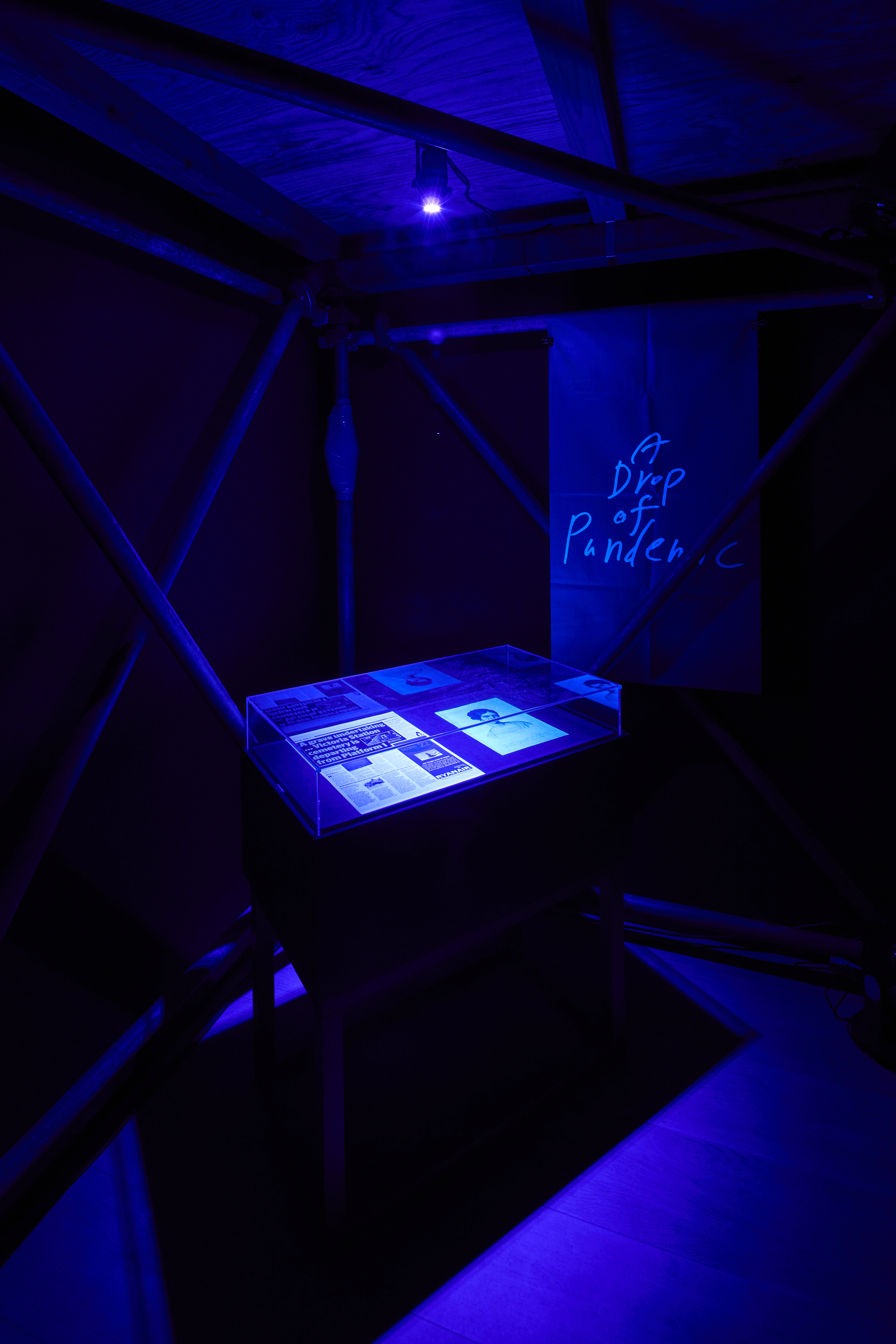
A Drunk PandemicA Drunk Pandemic
2019/2022 サイズ可変
展示風景:「Chim↑Pom展:ハッピースプリング」森美術館(東京)2022年
撮影:森田兼次
画像提供:森美術館2022 Dimensions variable
Installation view: Chim↑Pom: Happy Spring, Mori Art Museum, Tokyo, 2022
Photo: Kenji Morita
Photo courtesy: Mori Art Museum, Tokyo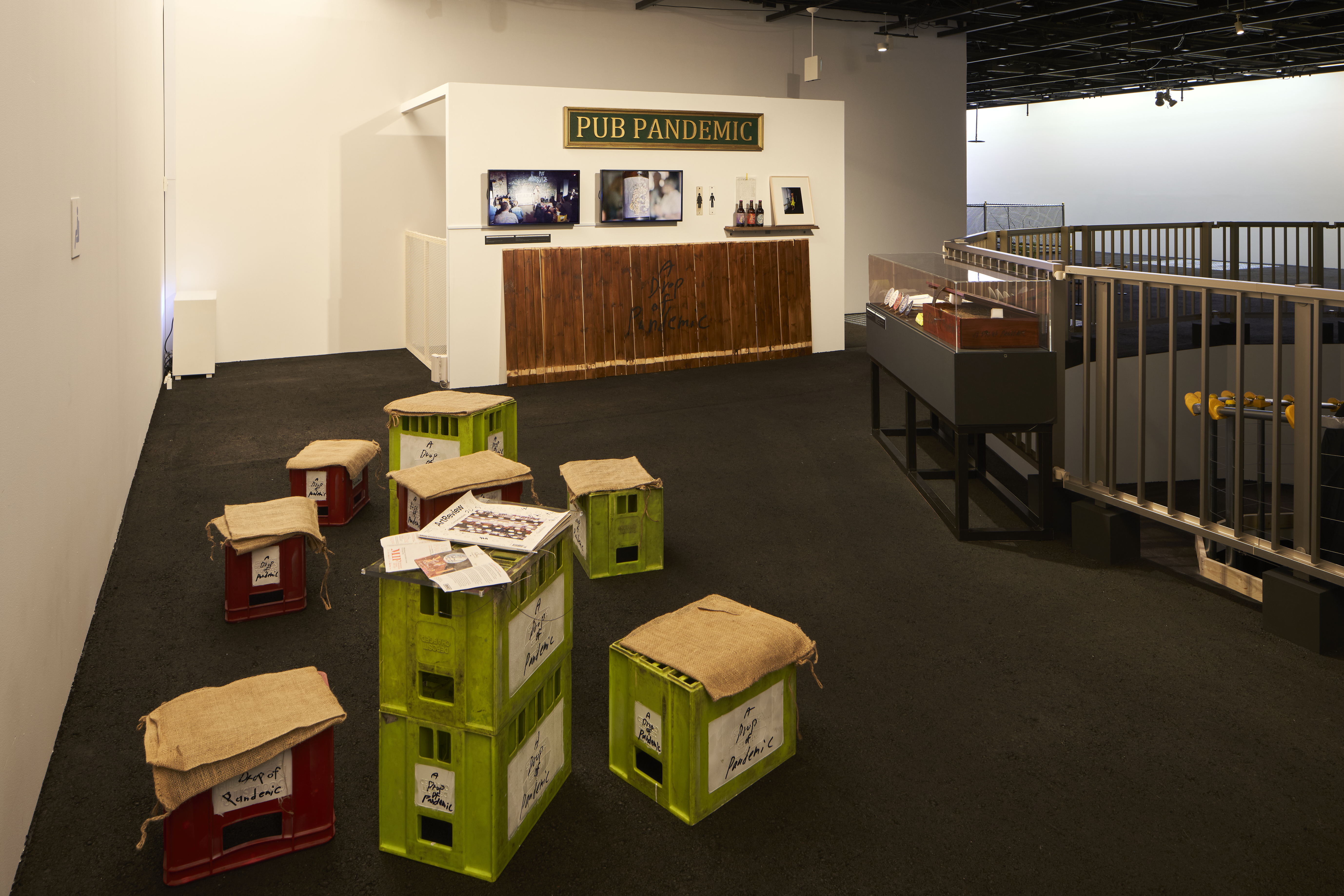
A Drunk PandemicA Drunk Pandemic
2019/2022 サイズ可変
展示風景:「Chim↑Pom展:ハッピースプリング」森美術館(東京)2022年
撮影:森田兼次
画像提供:森美術館2022 Dimensions variable
Installation view: Chim↑Pom: Happy Spring, Mori Art Museum, Tokyo, 2022
Photo: Kenji Morita
Photo courtesy: Mori Art Museum, Tokyo

